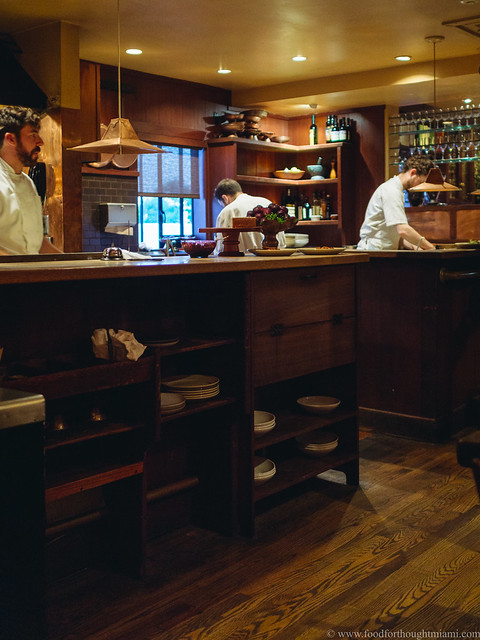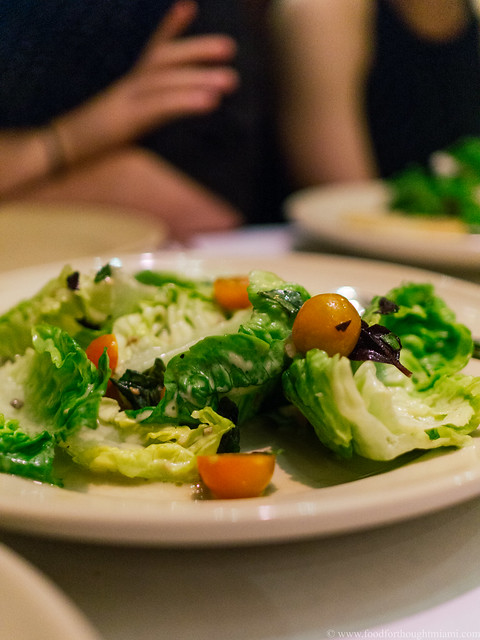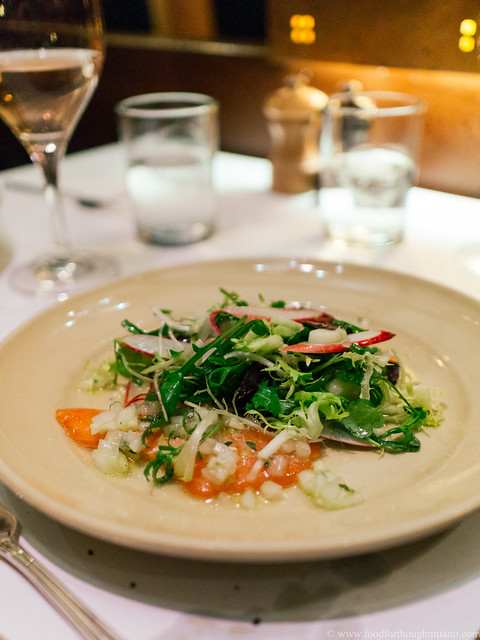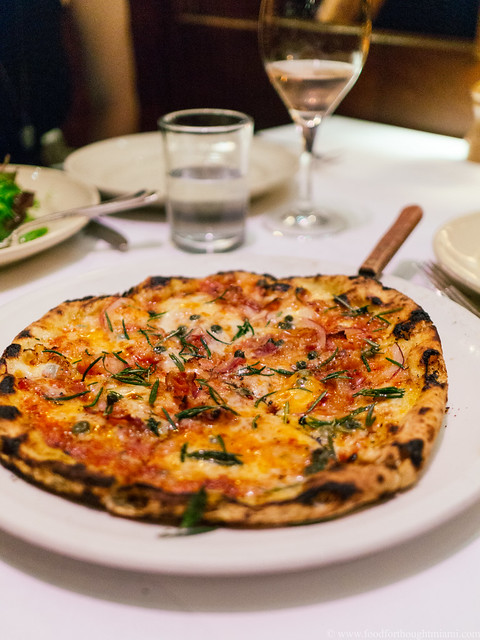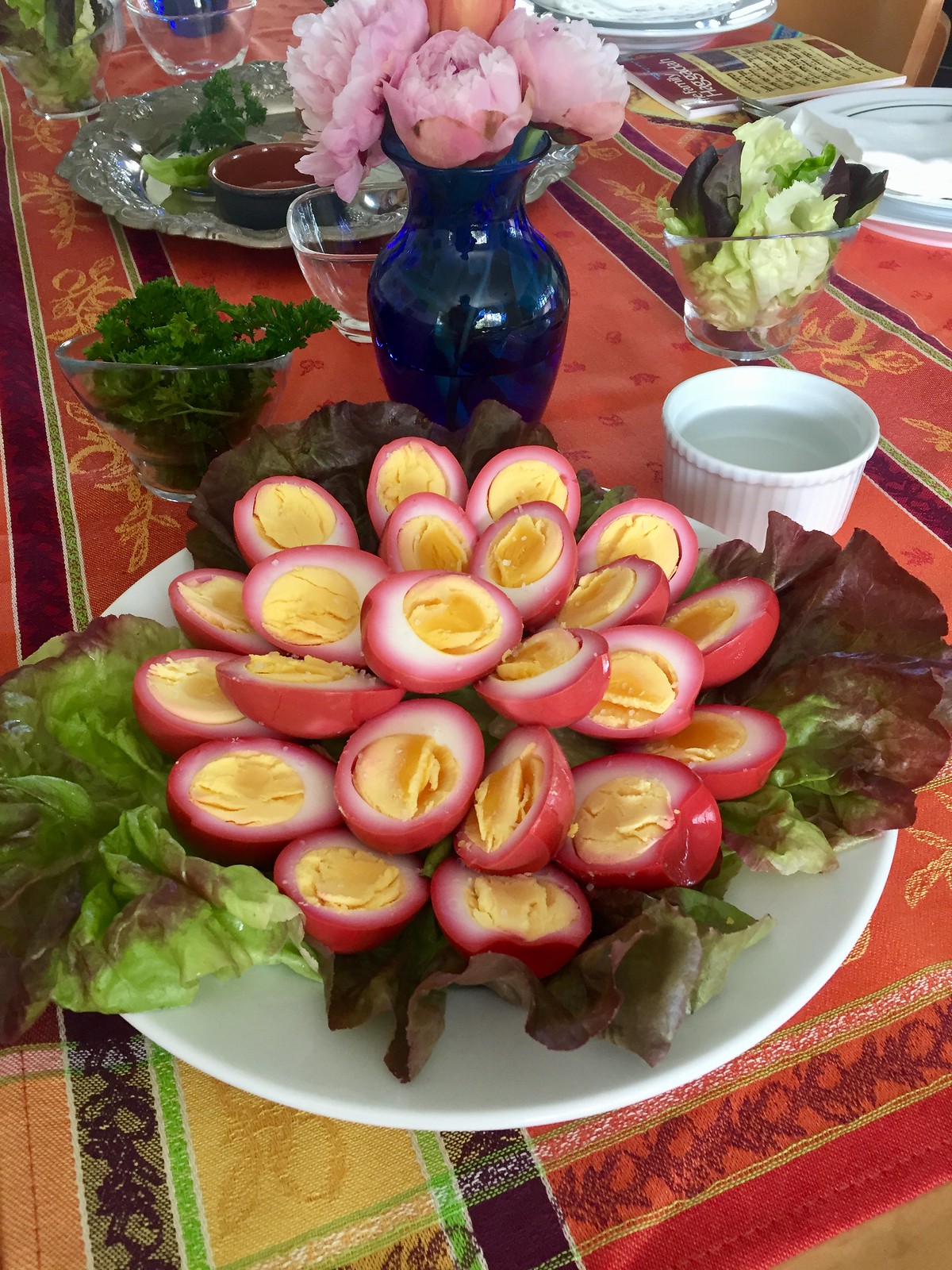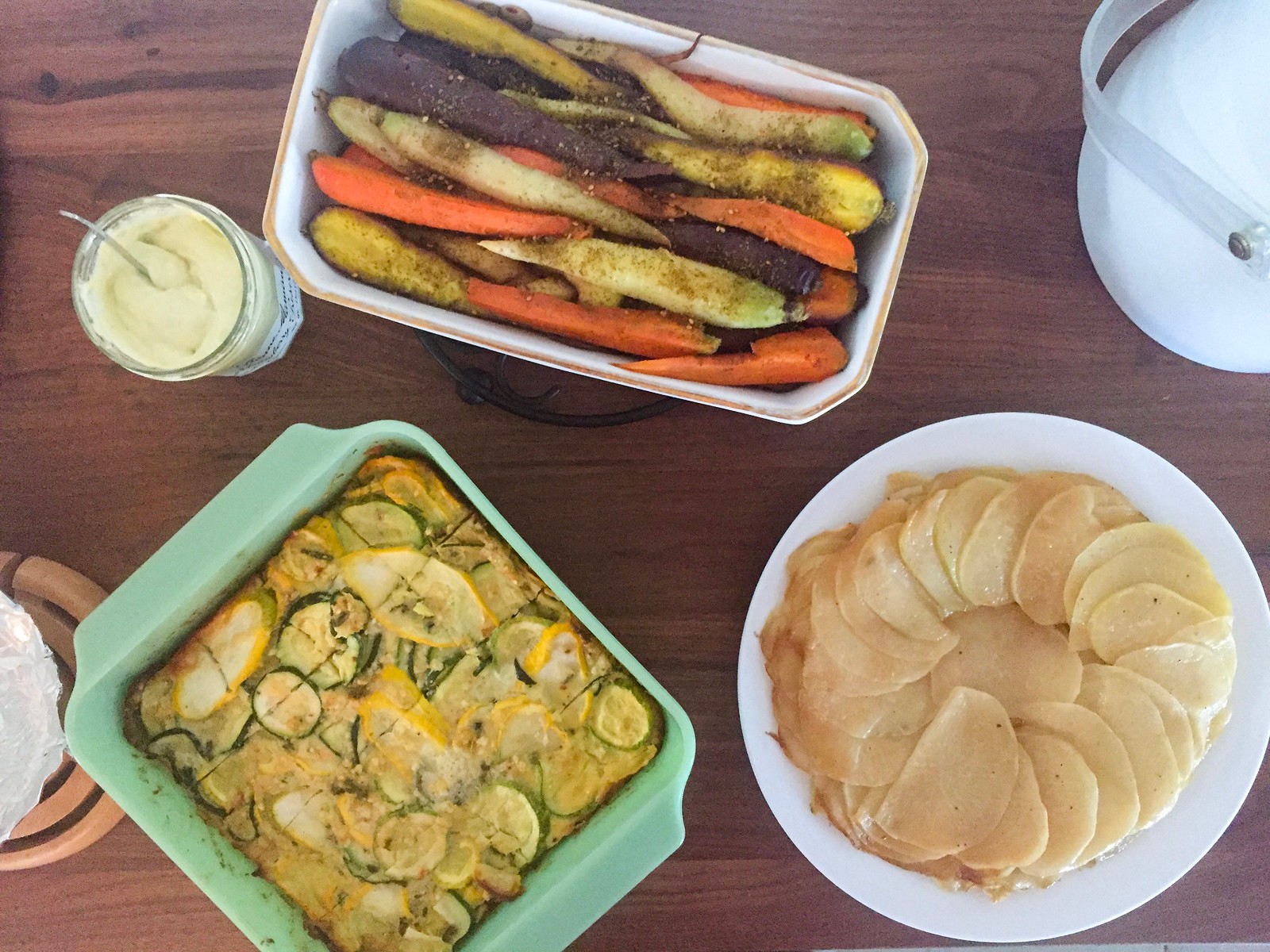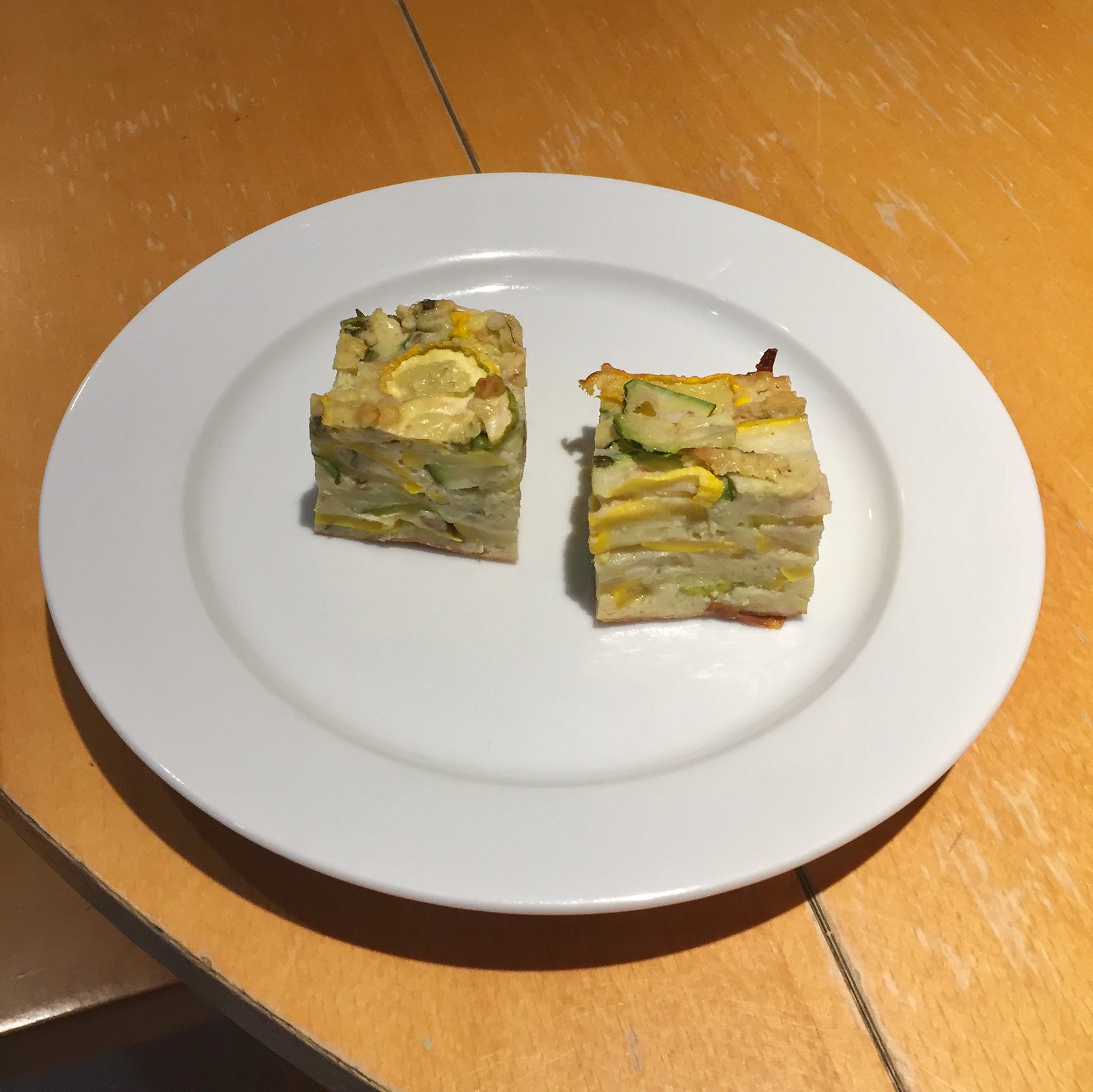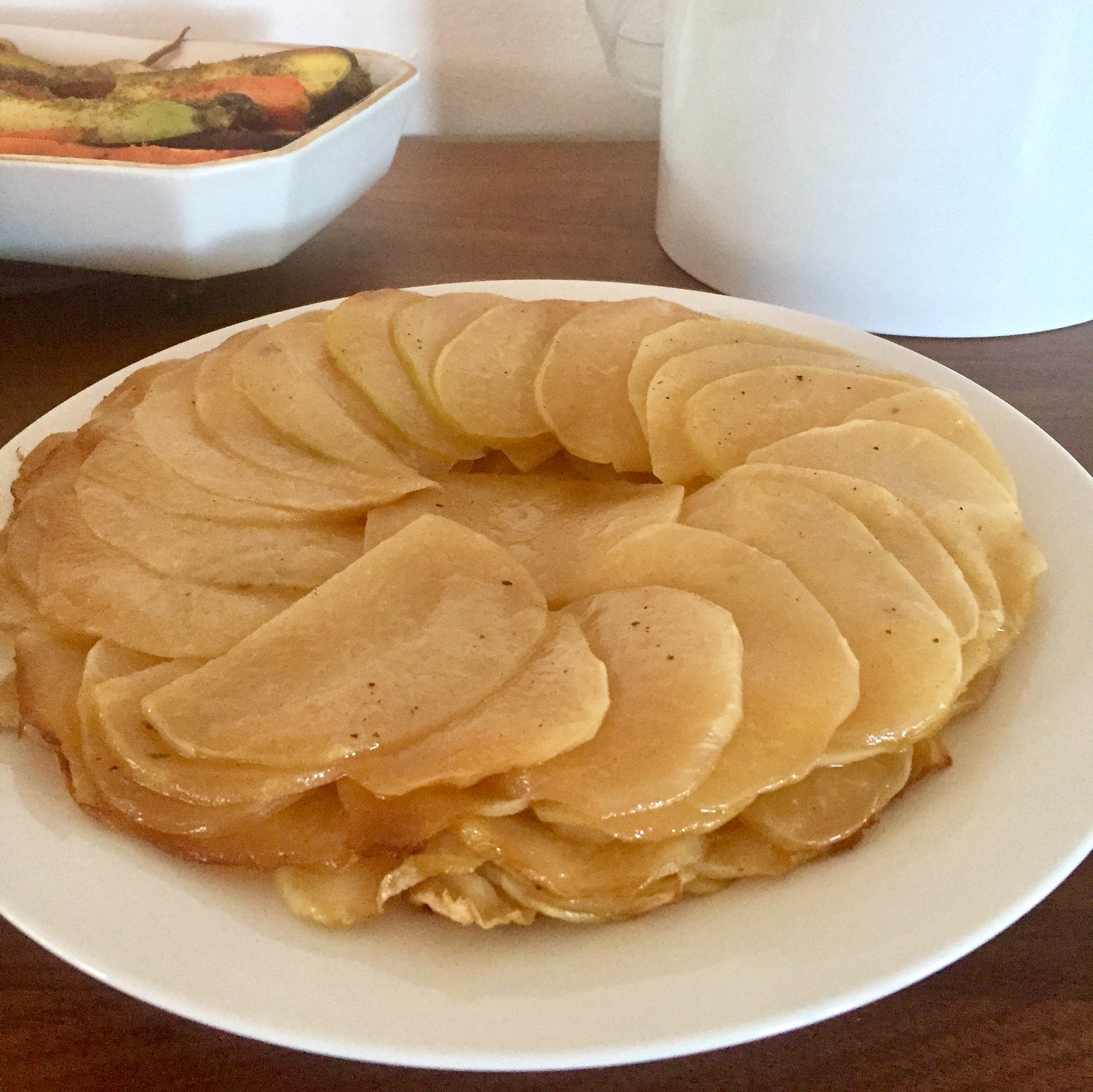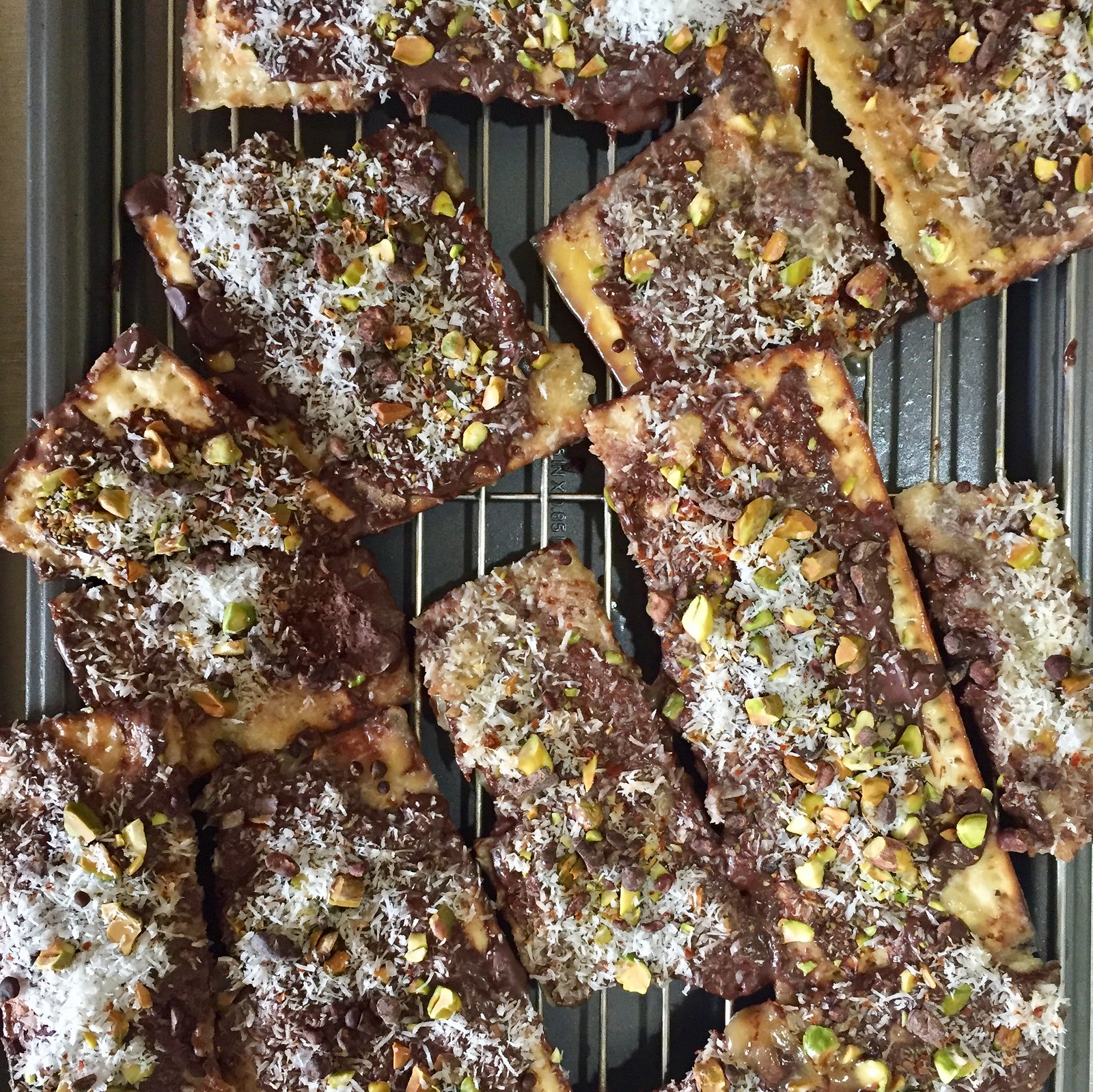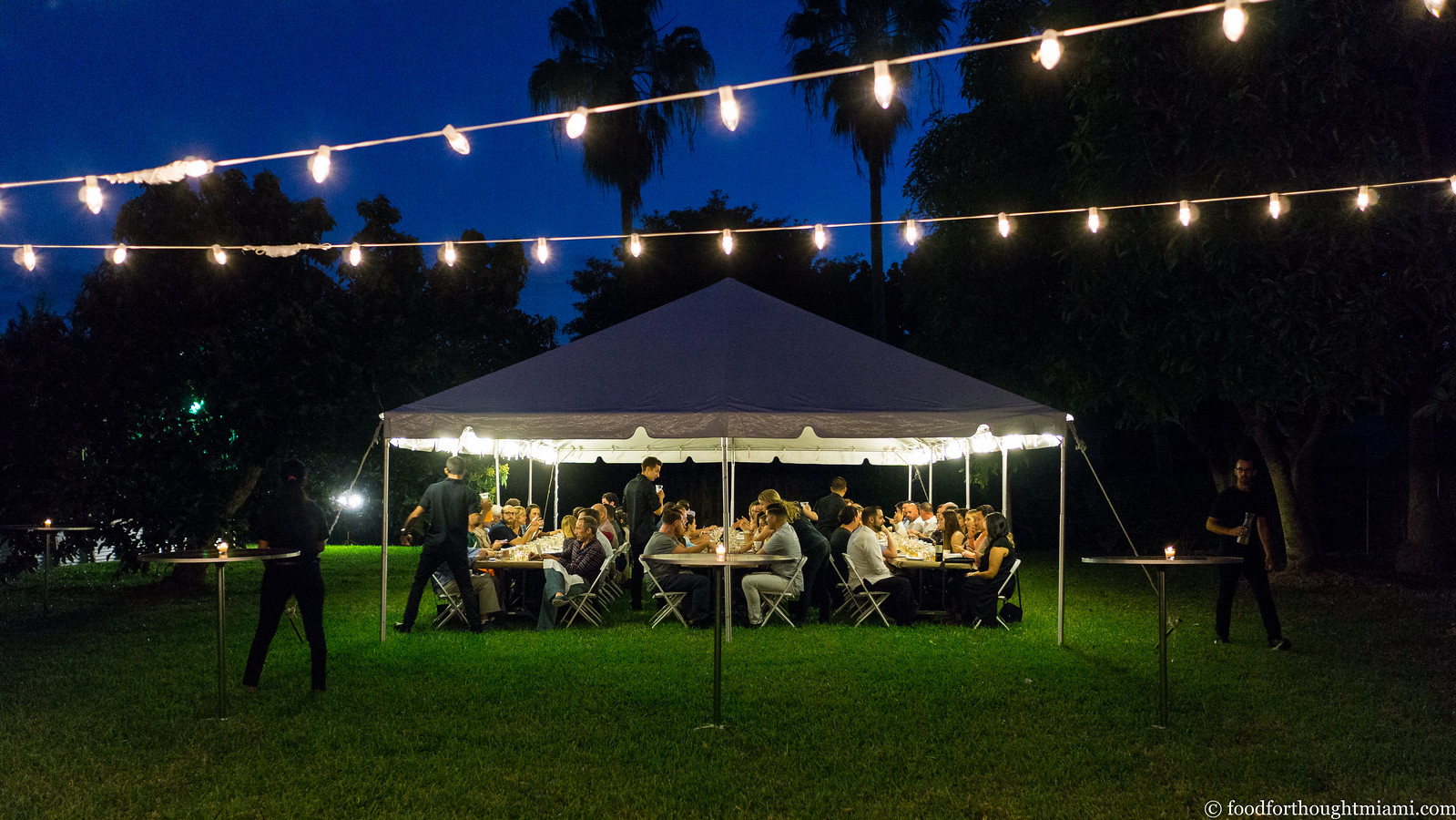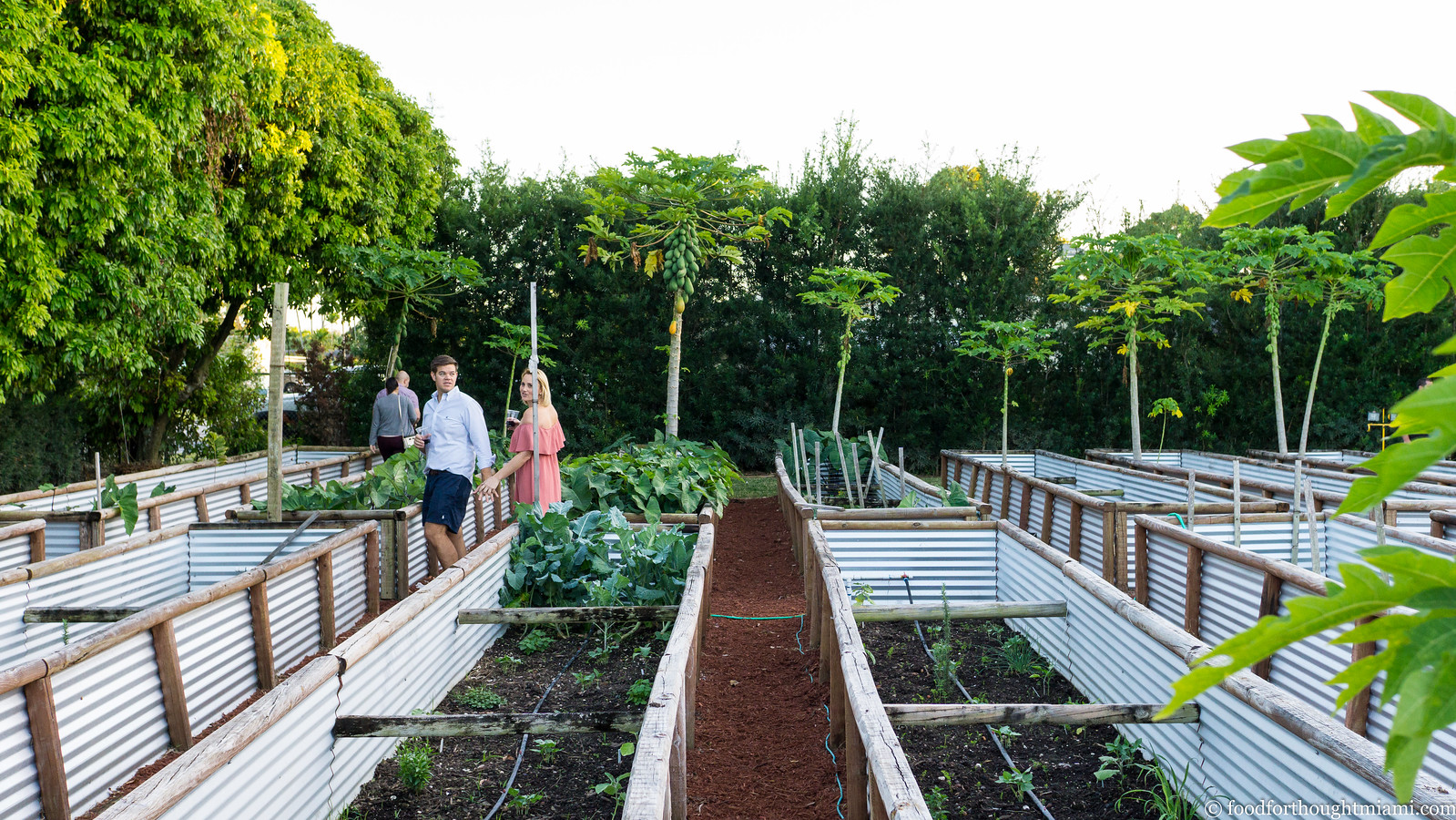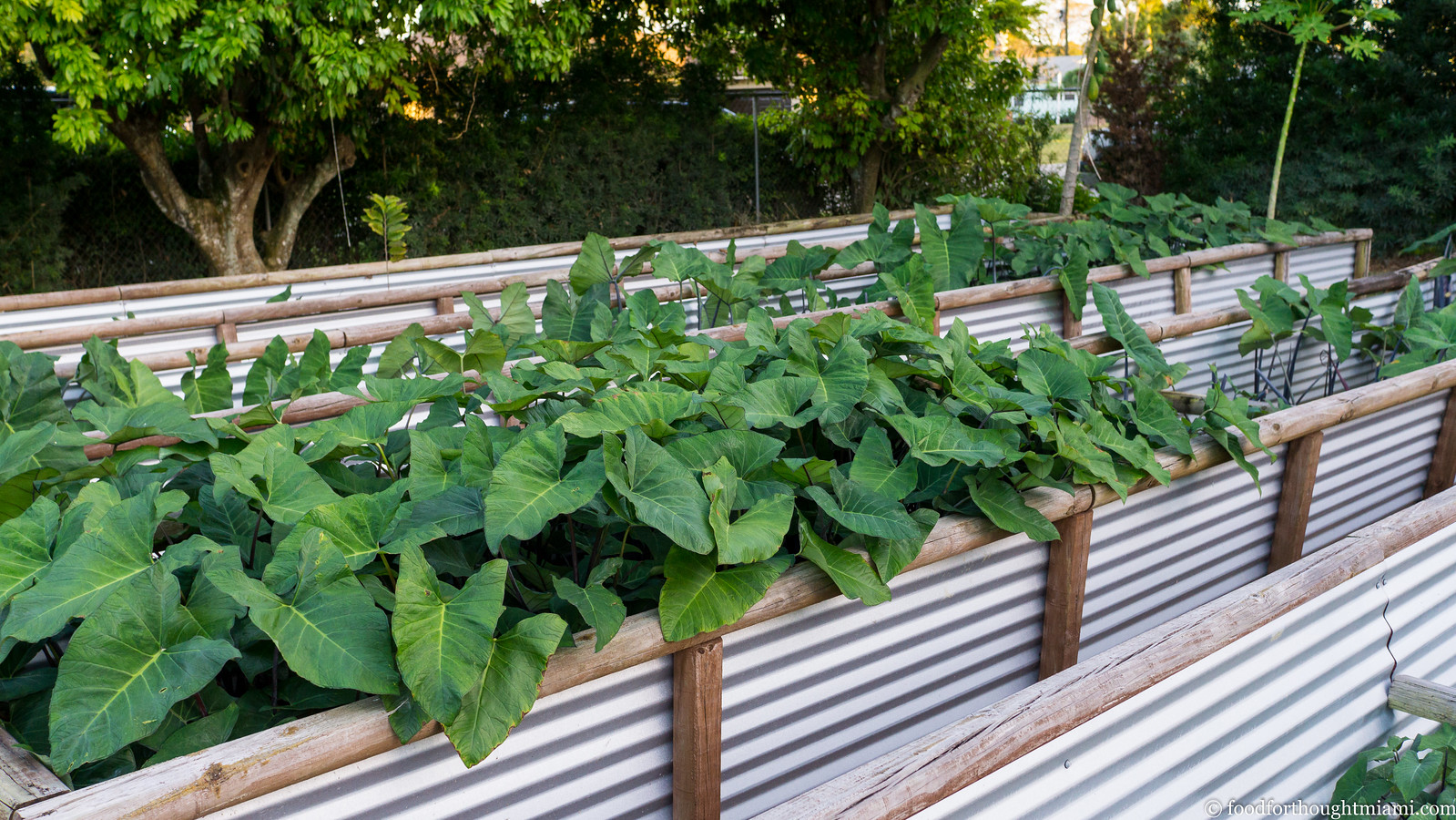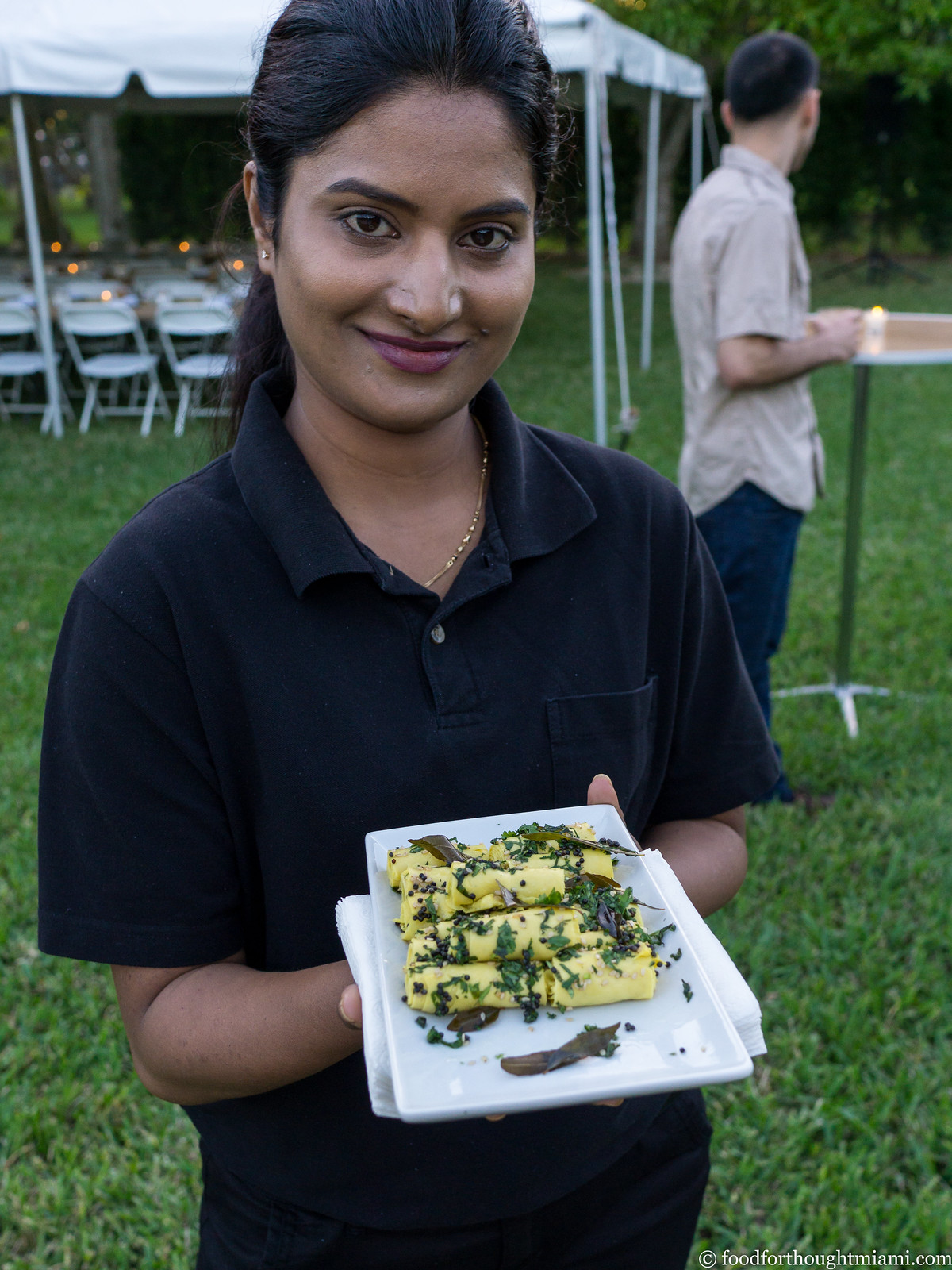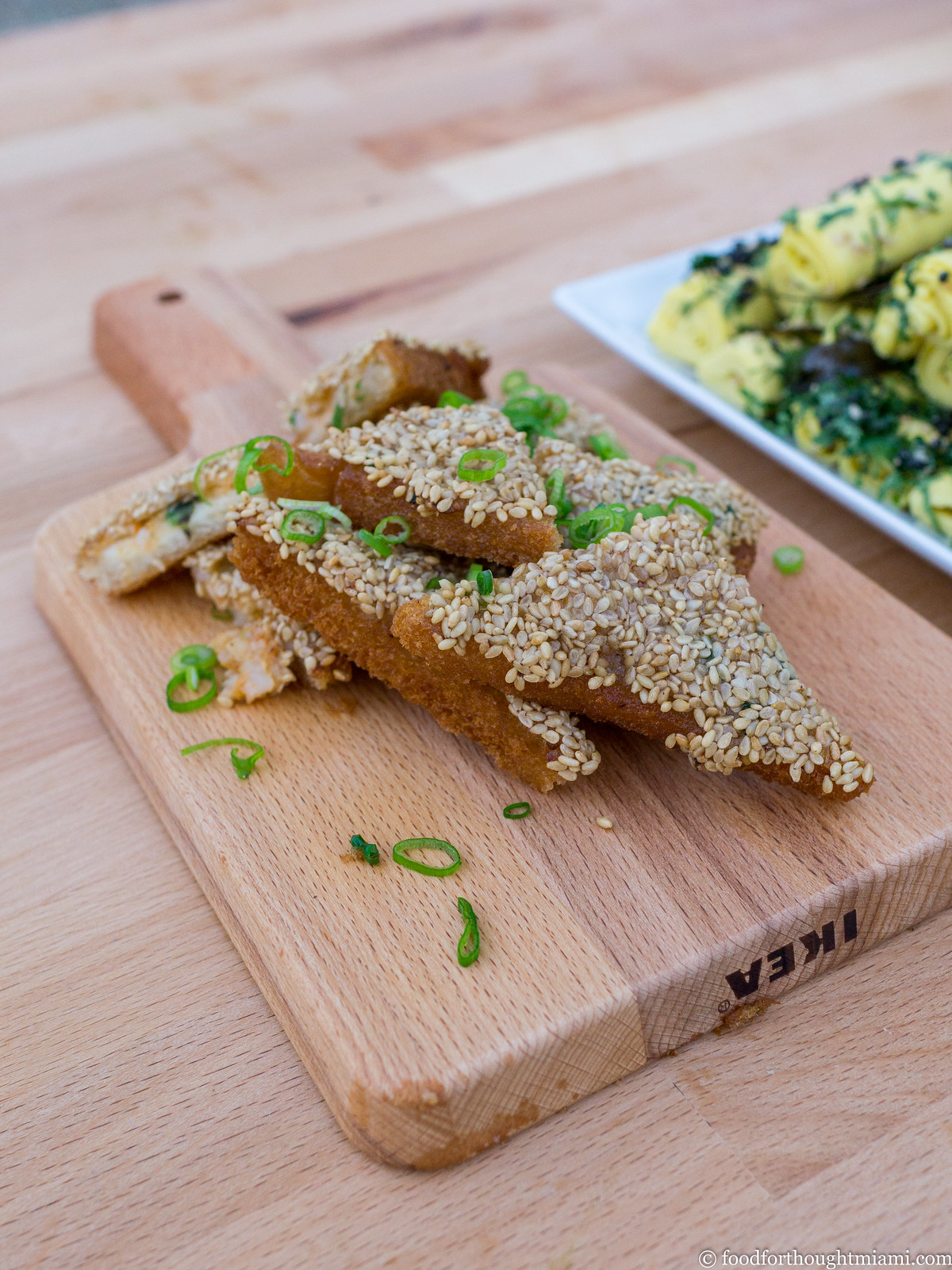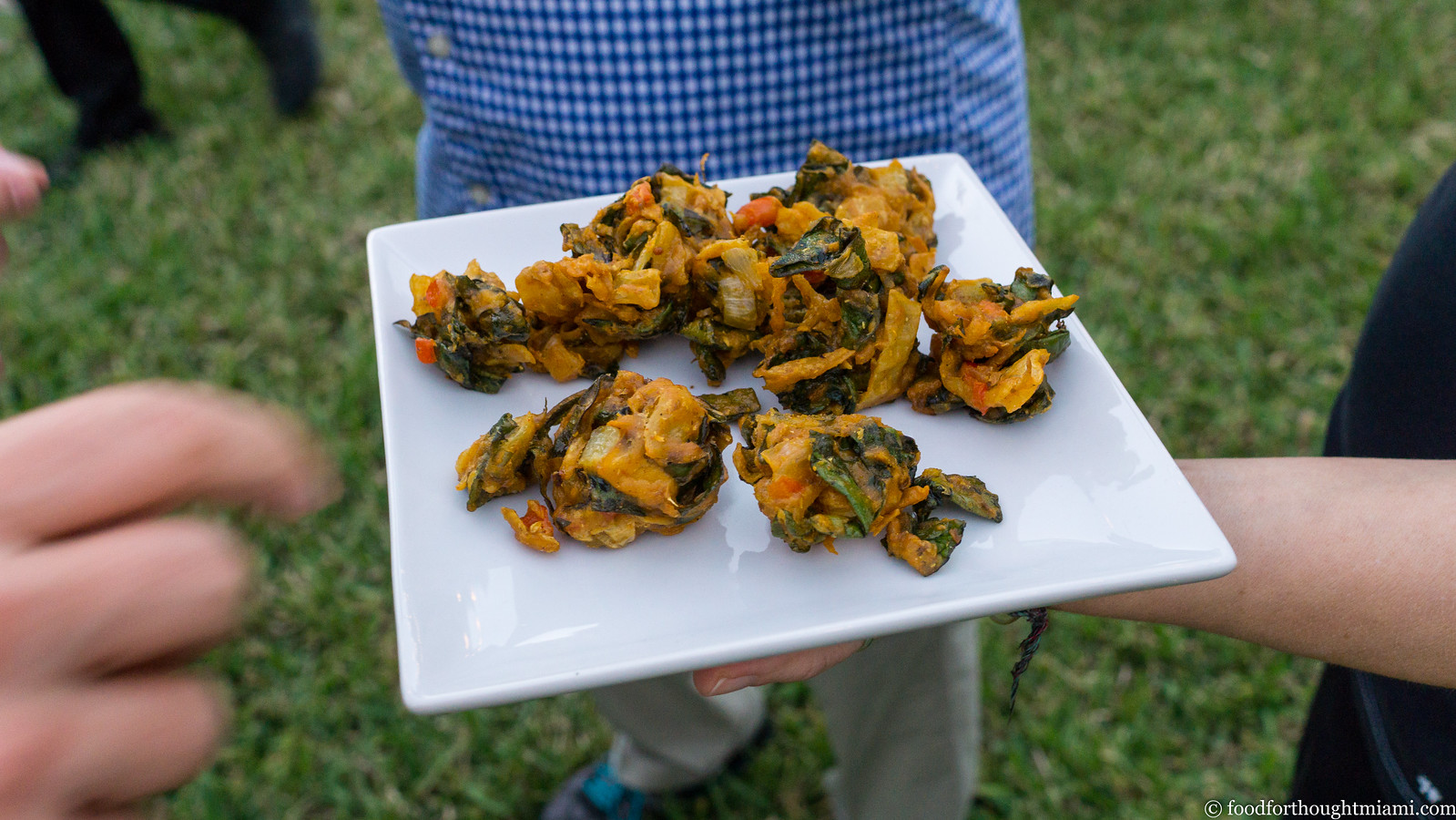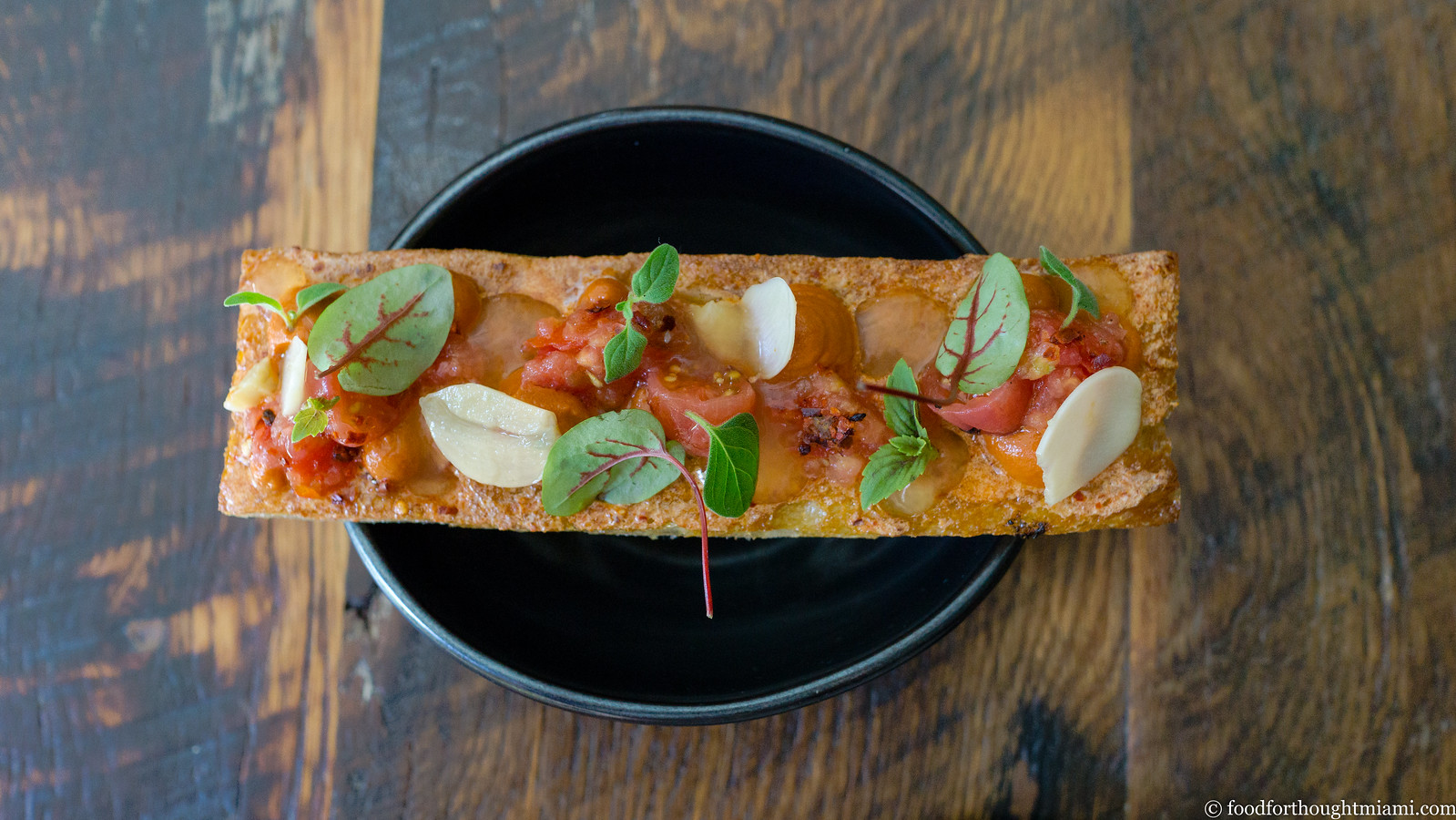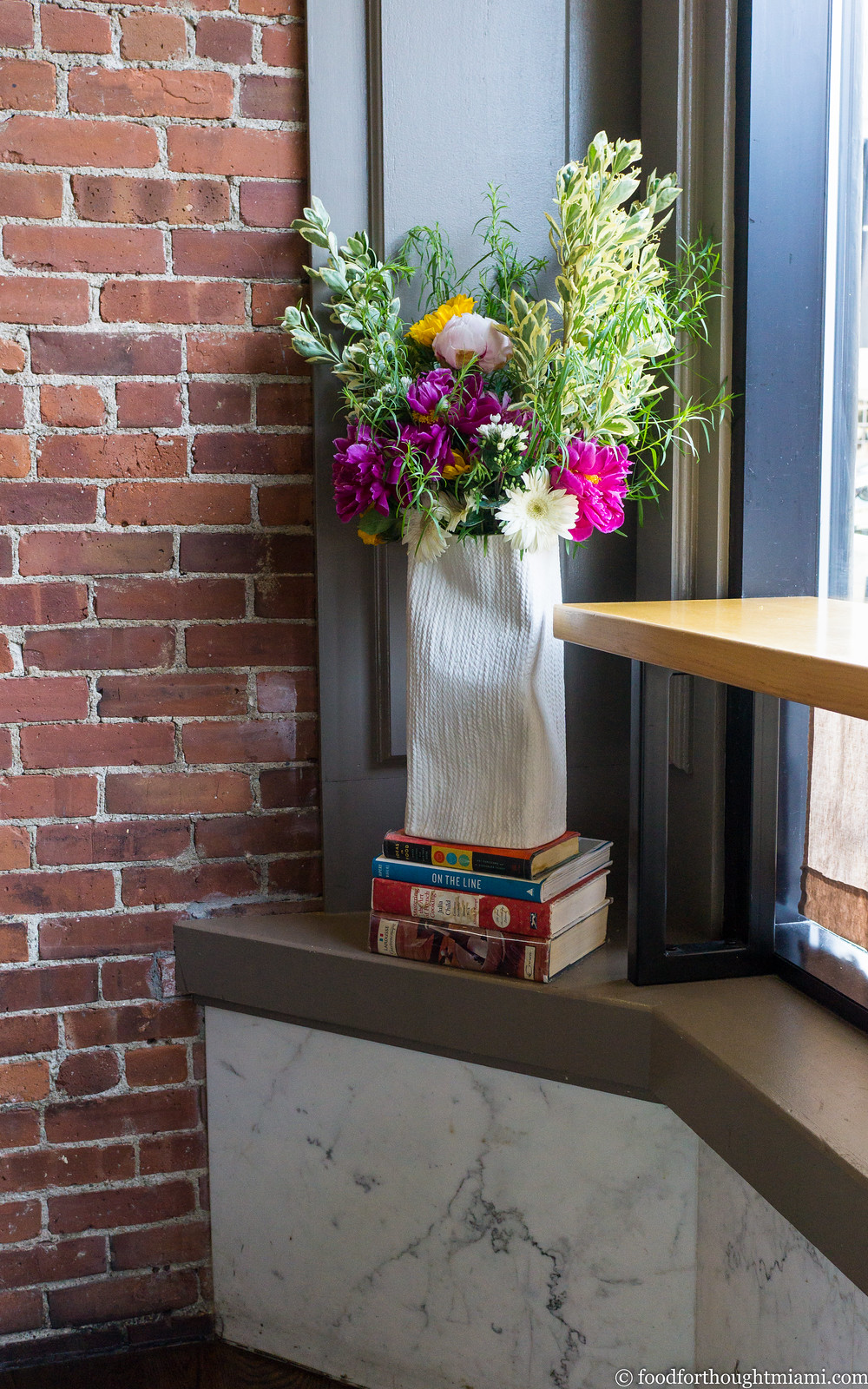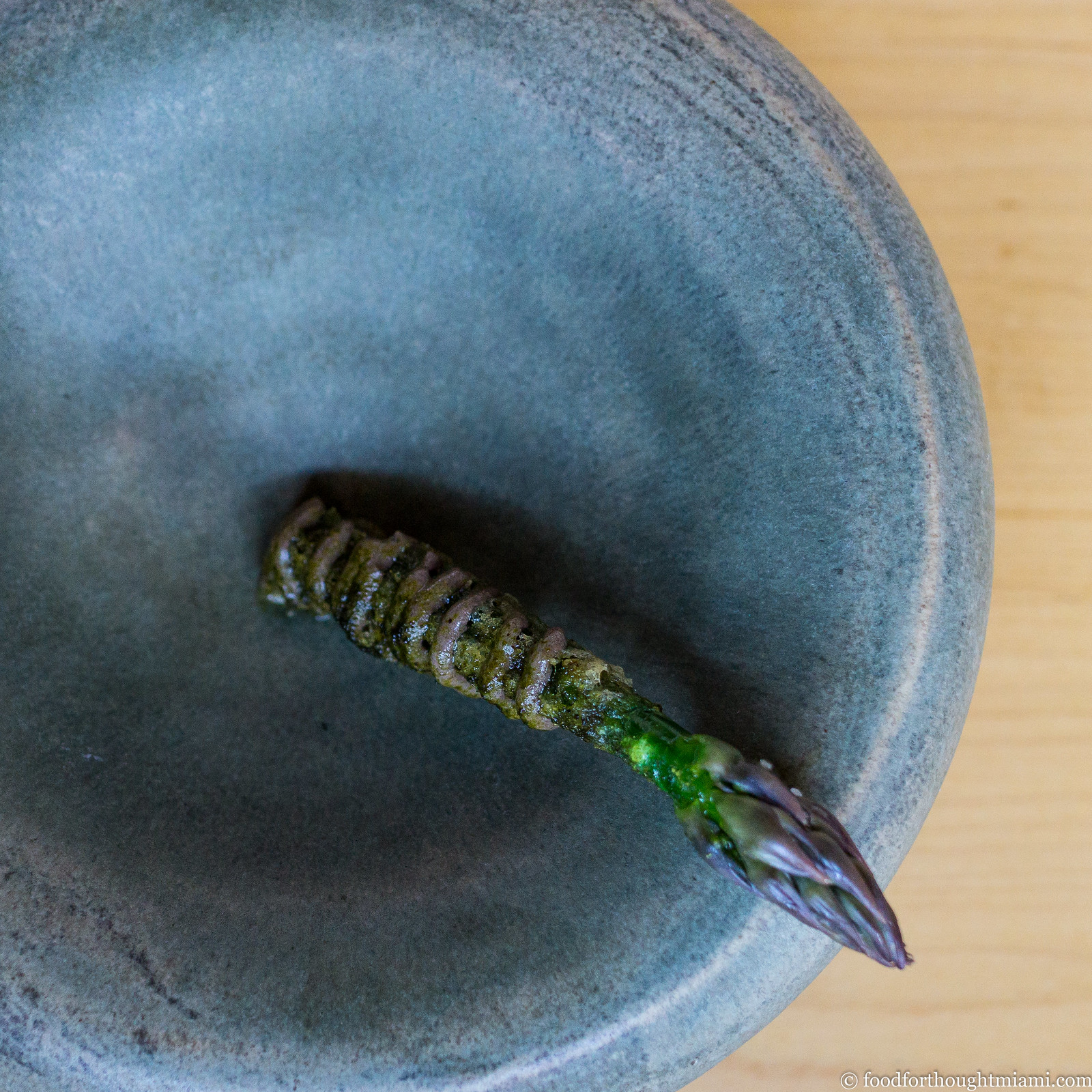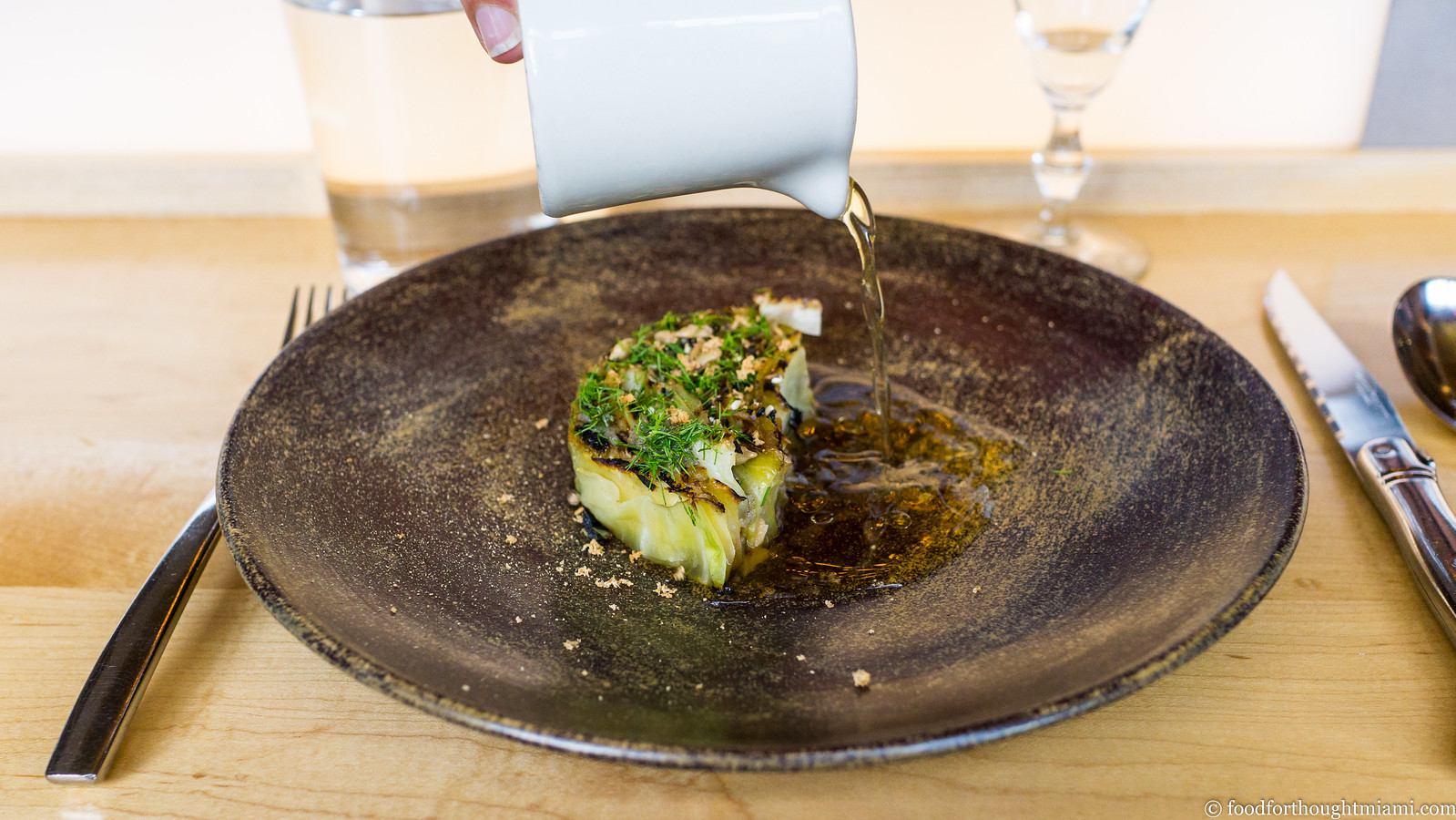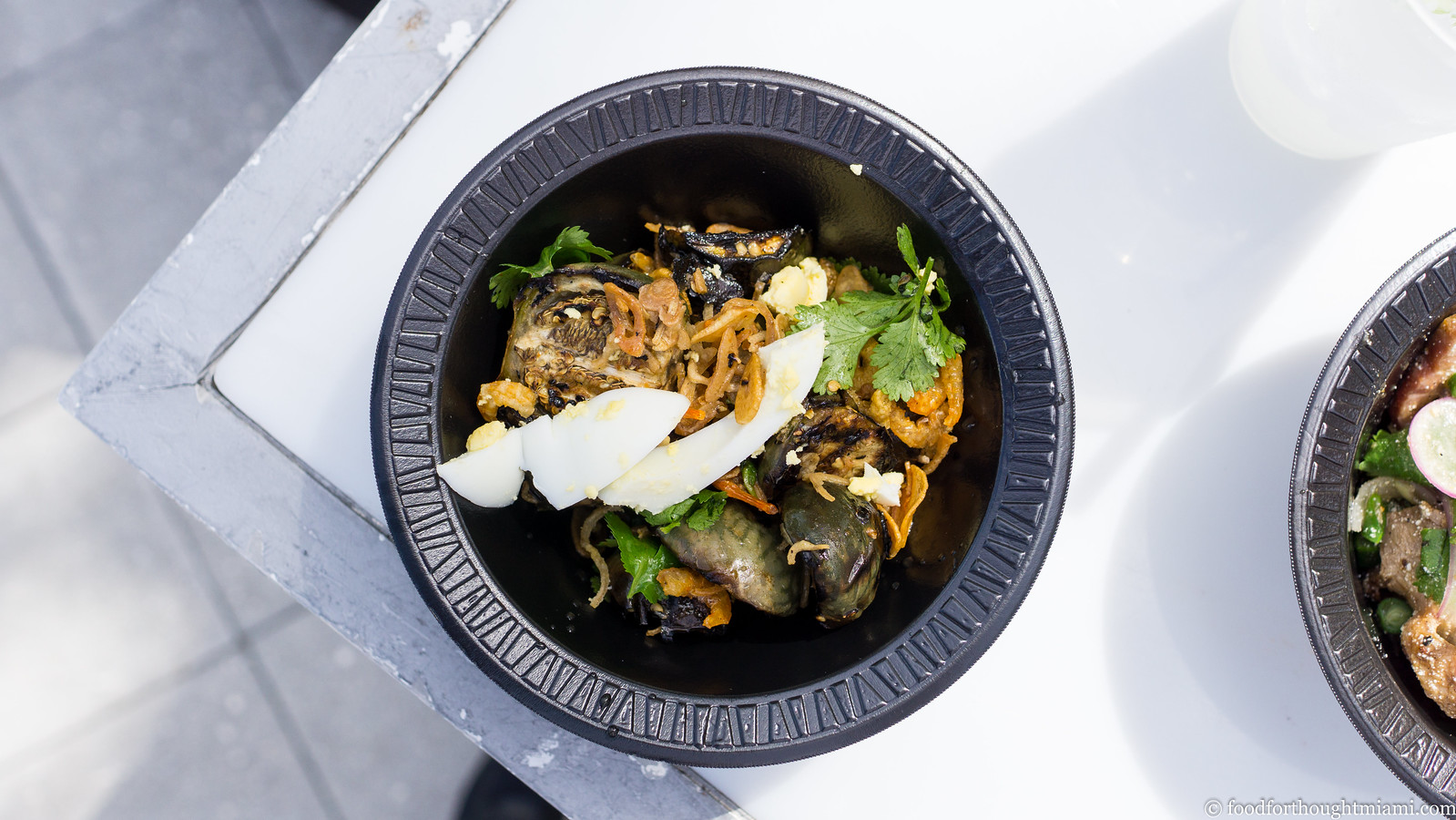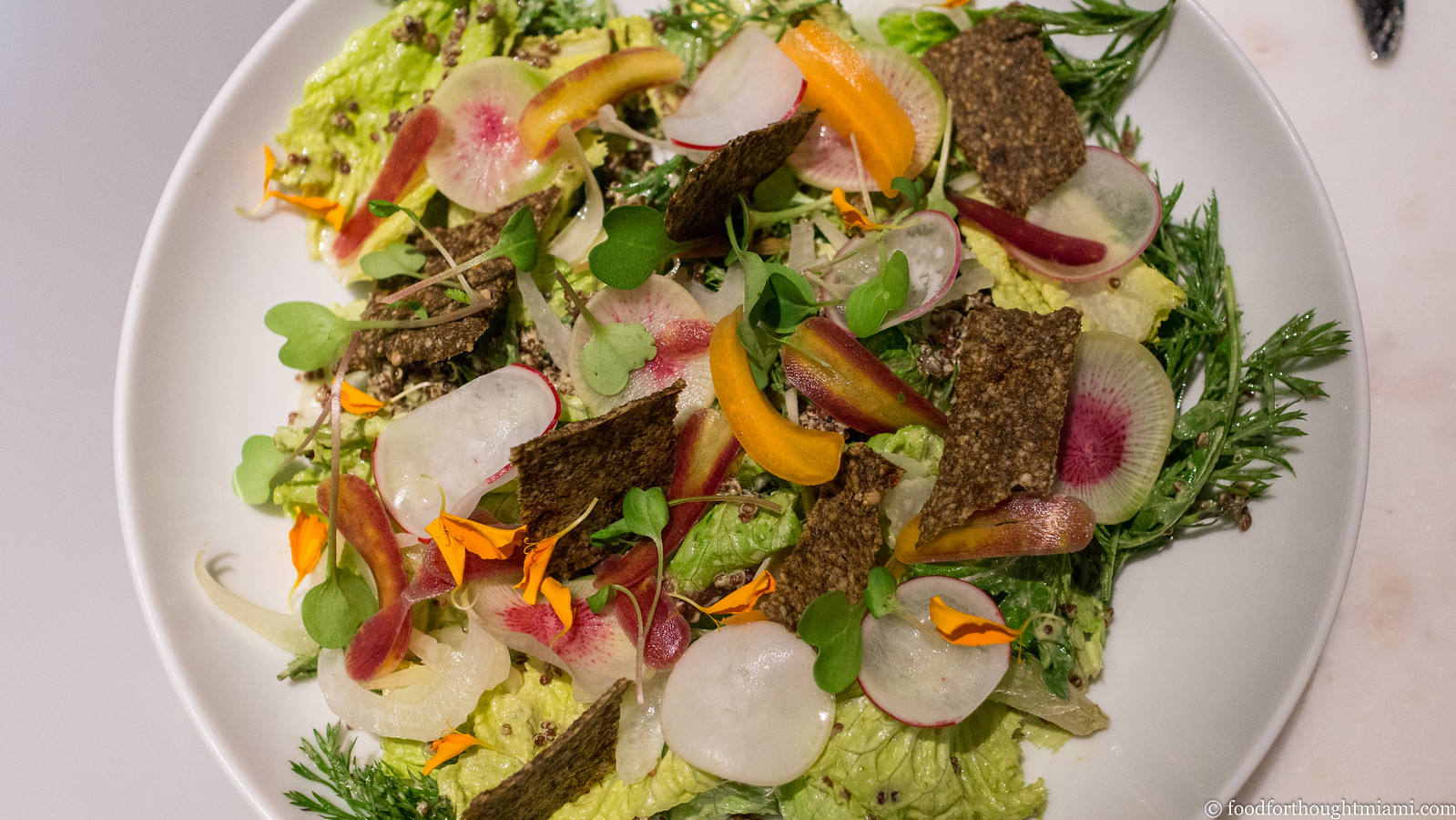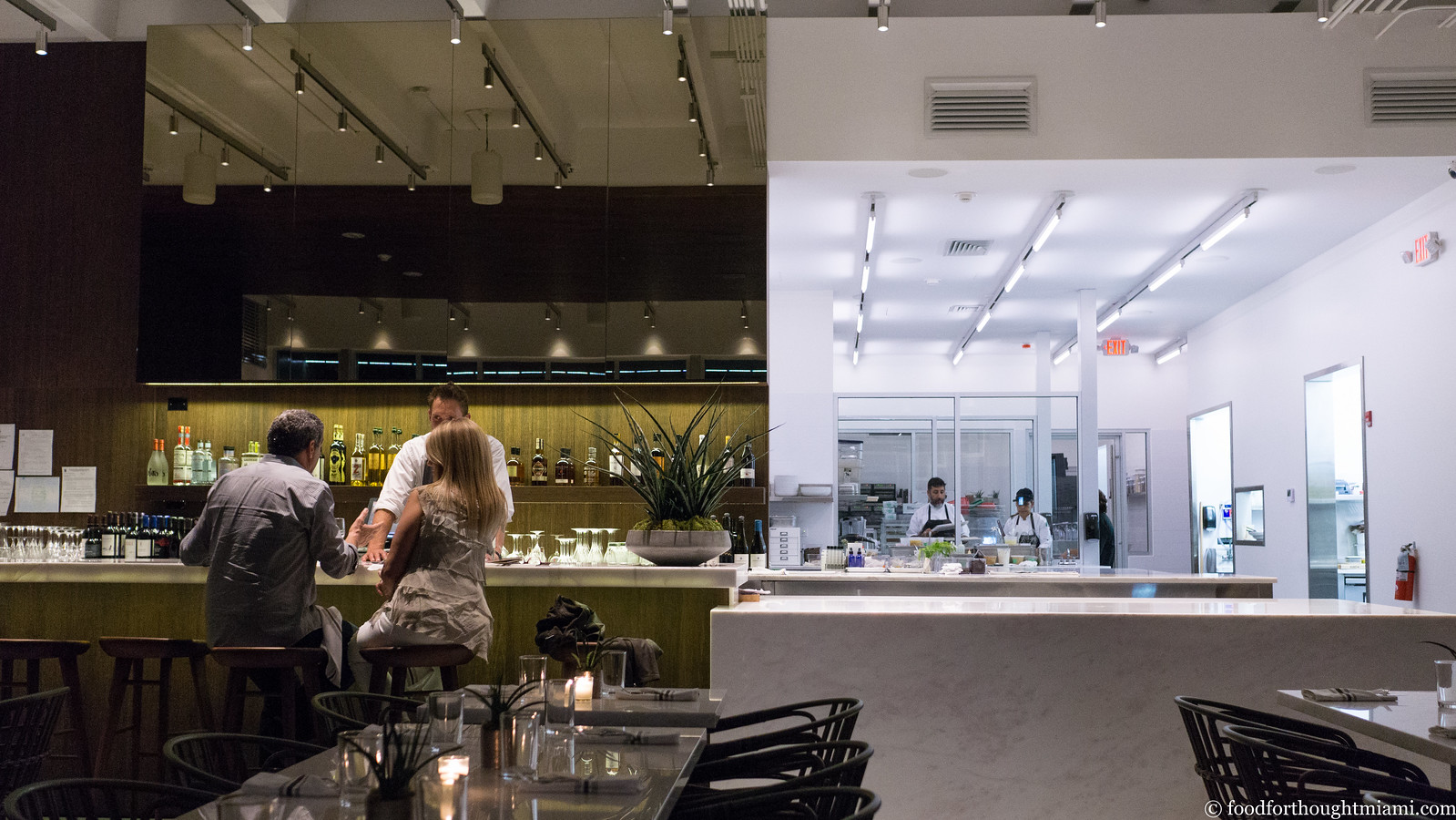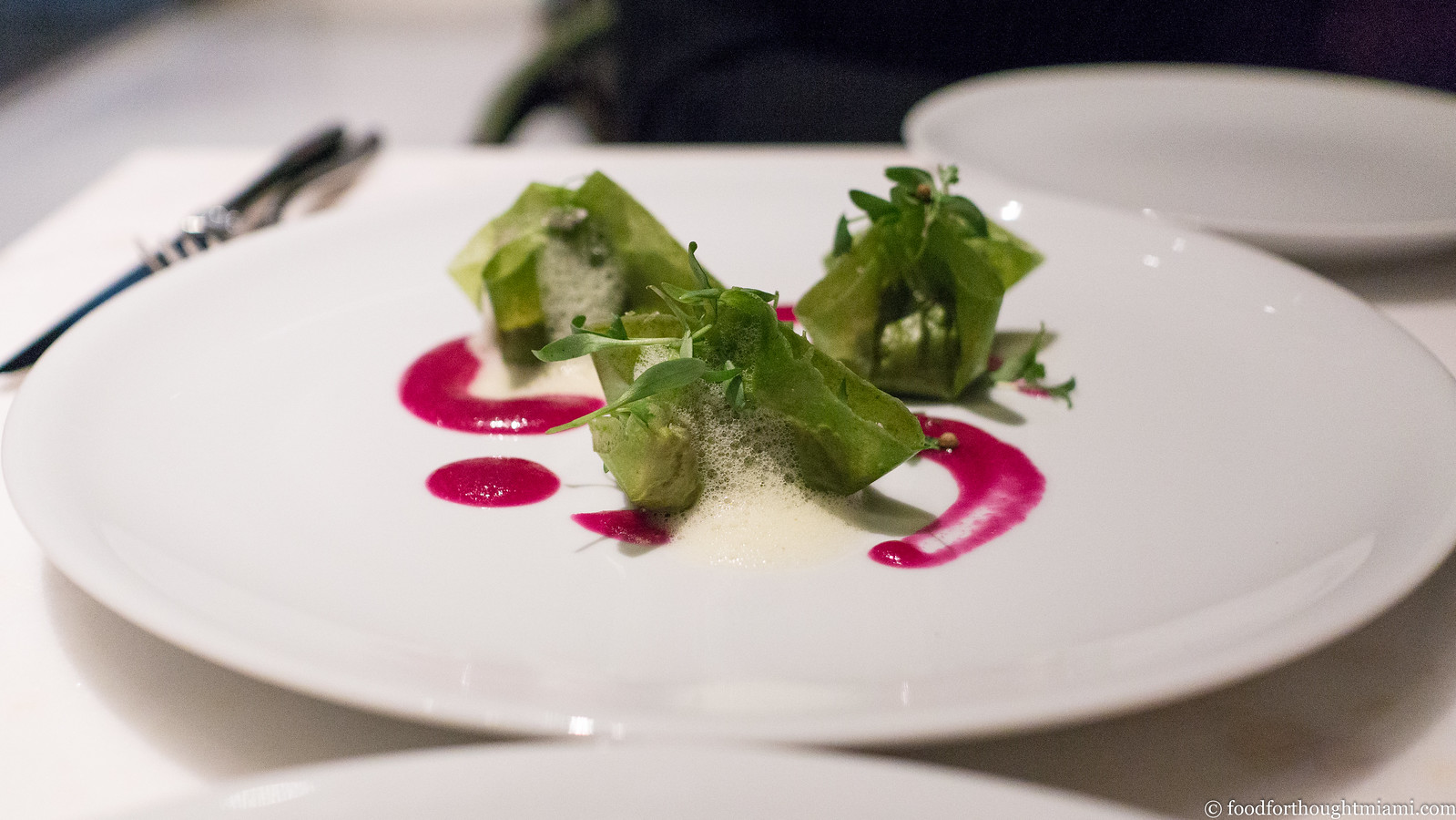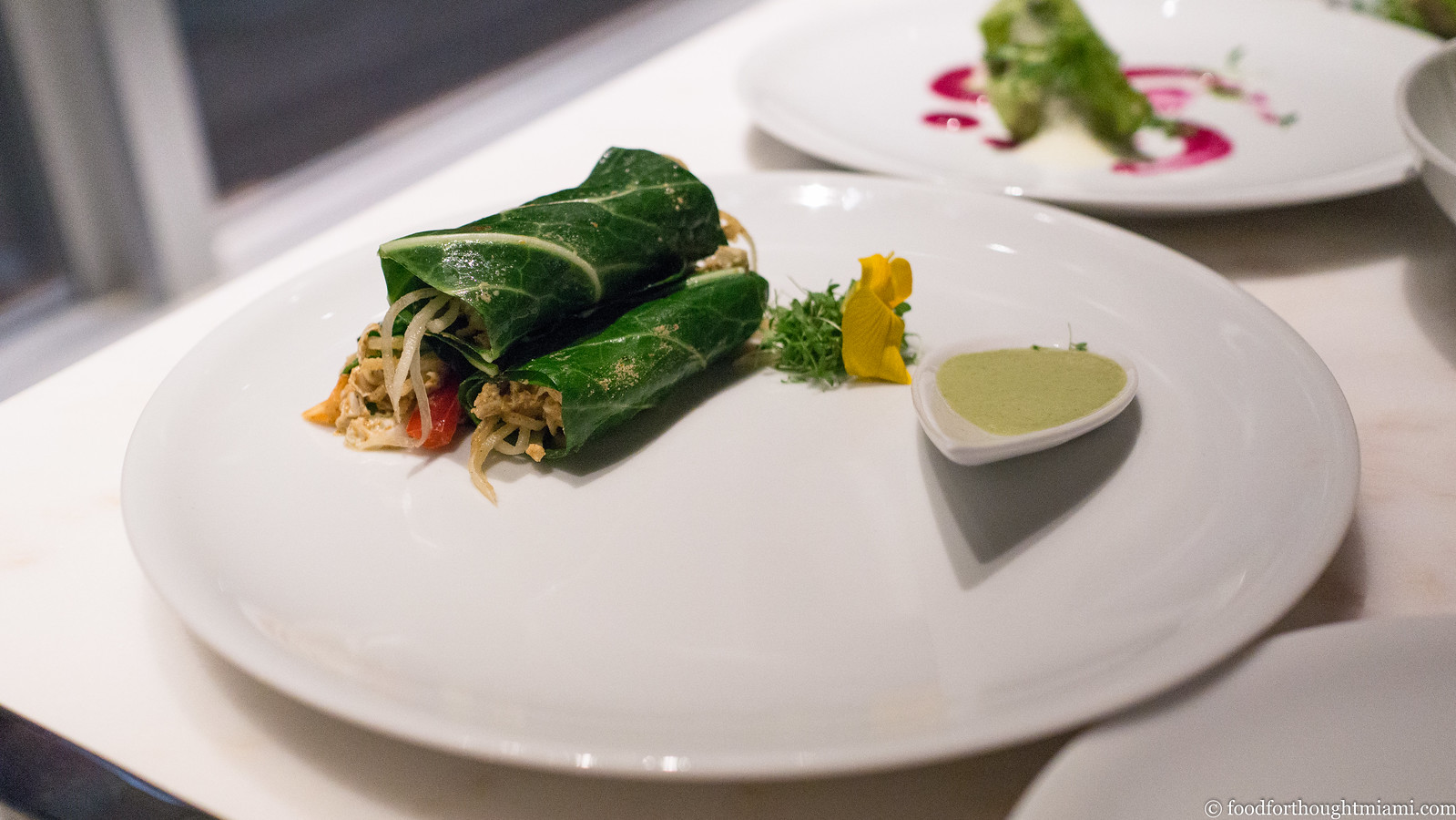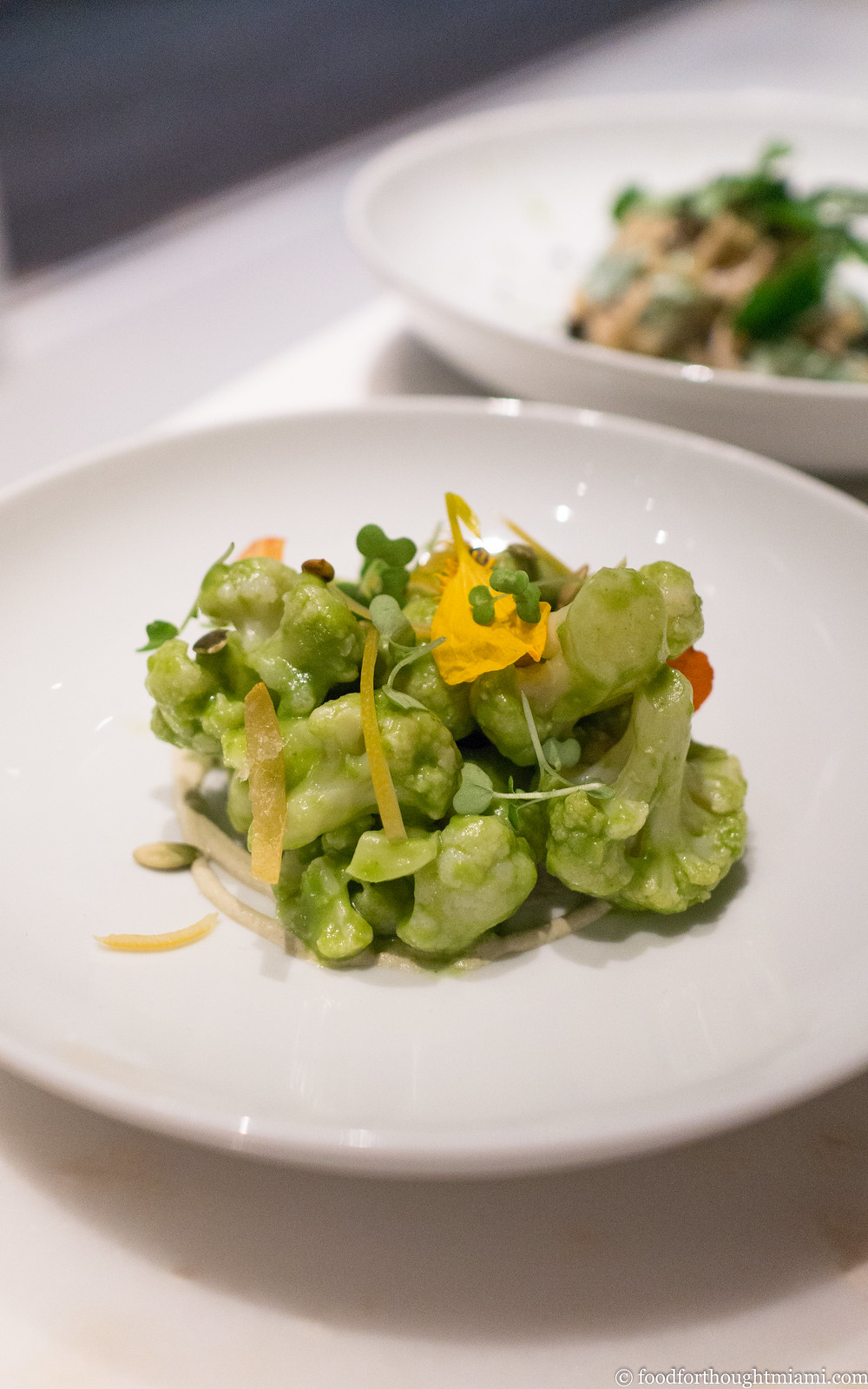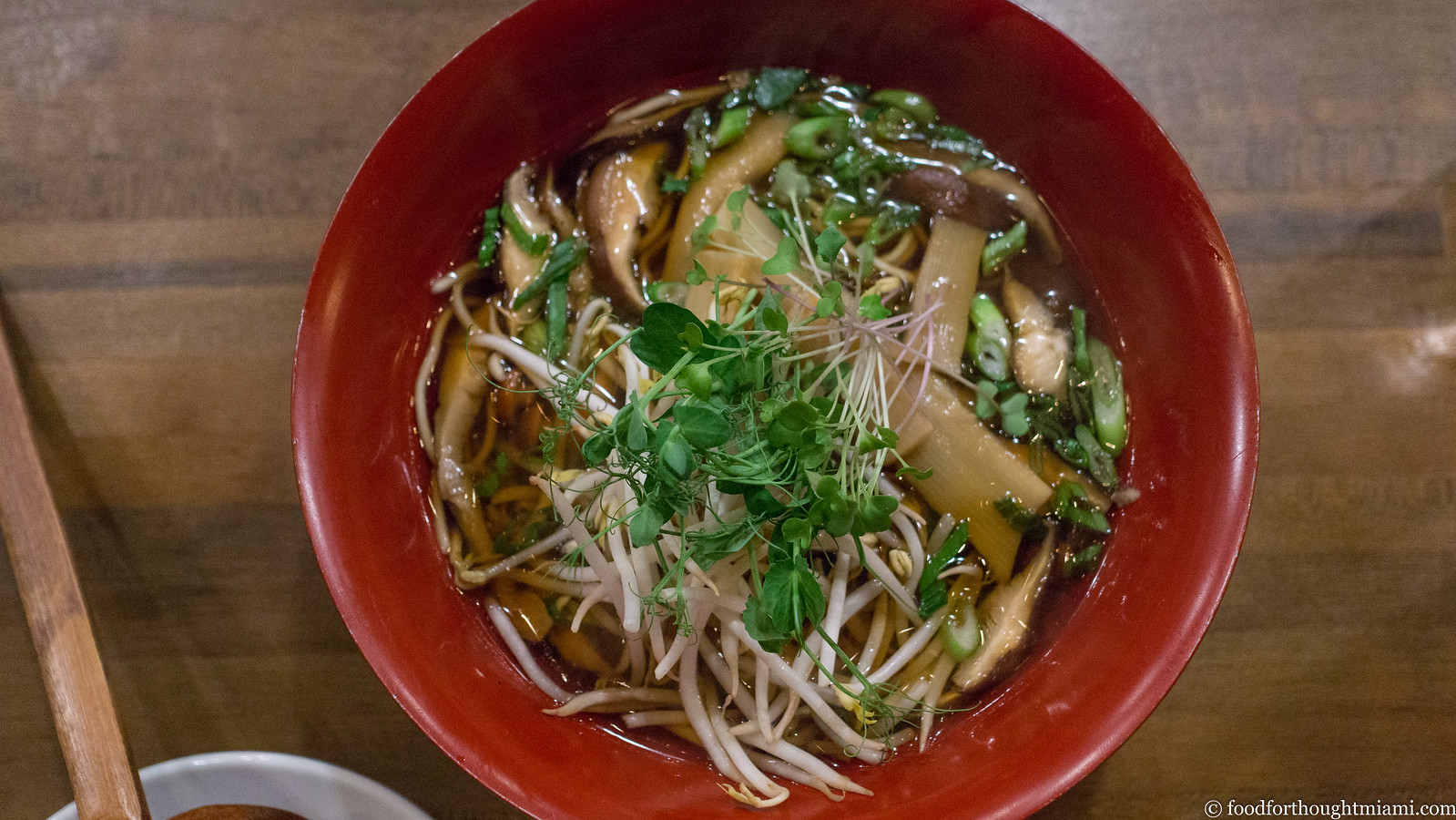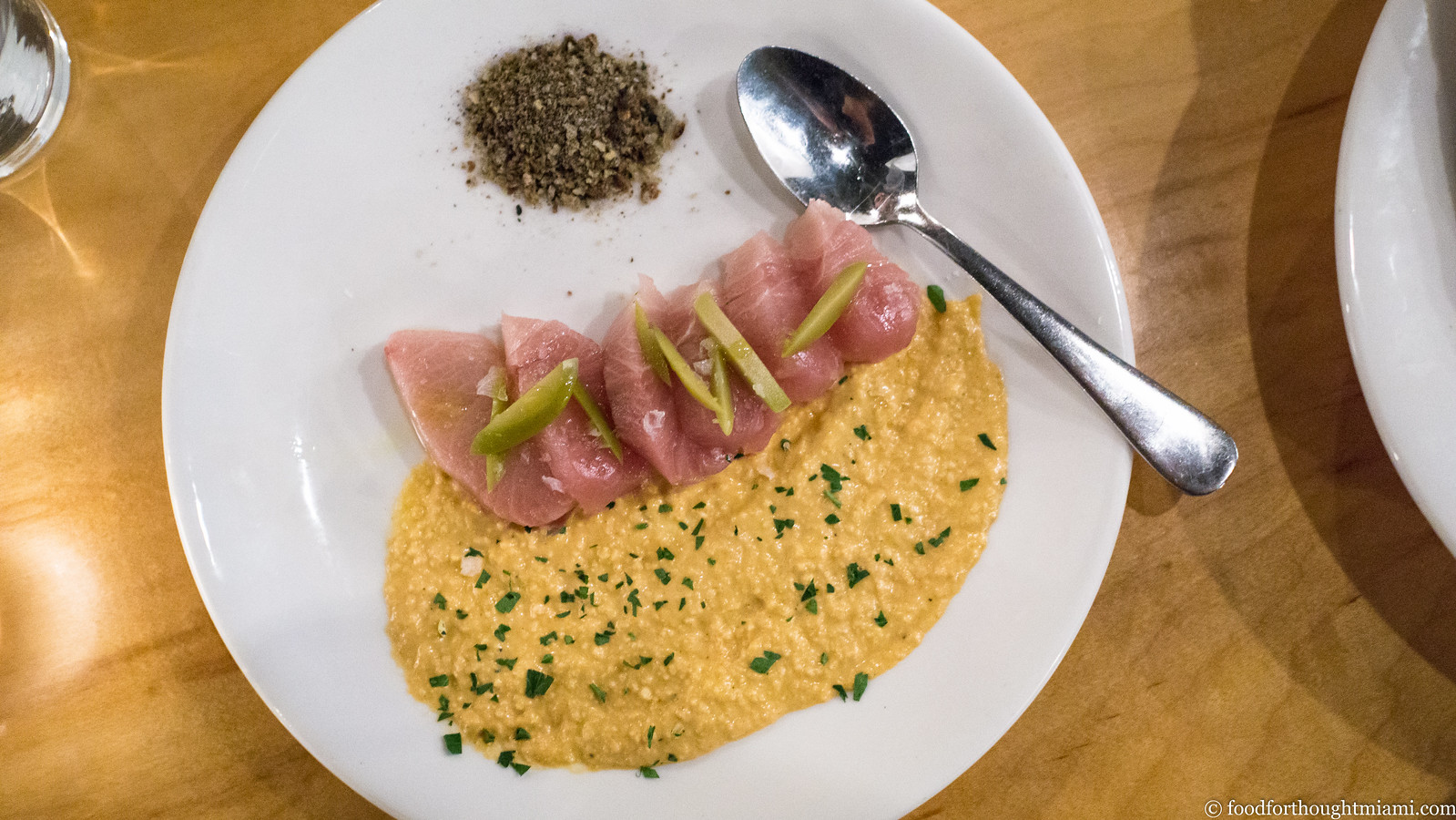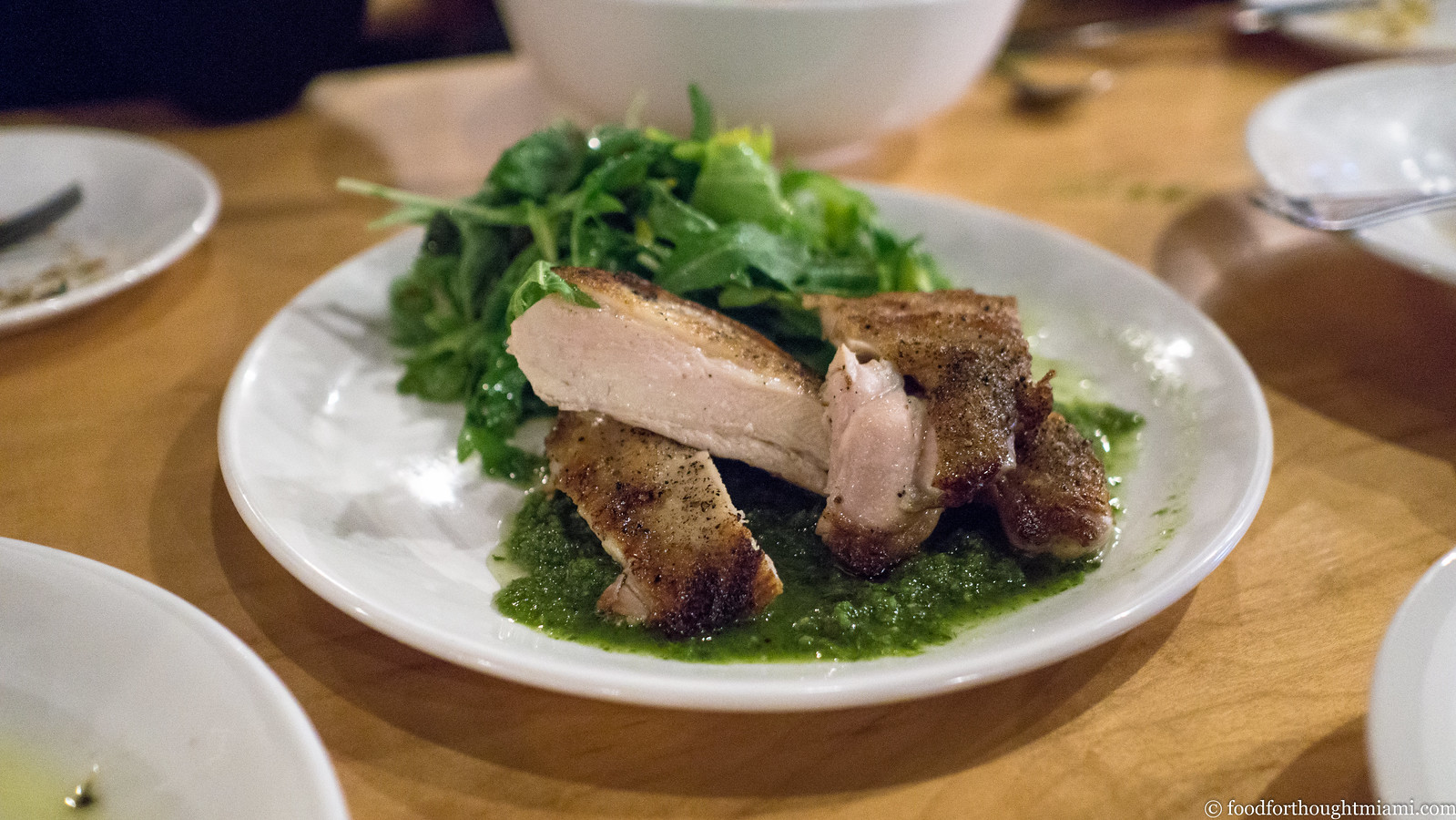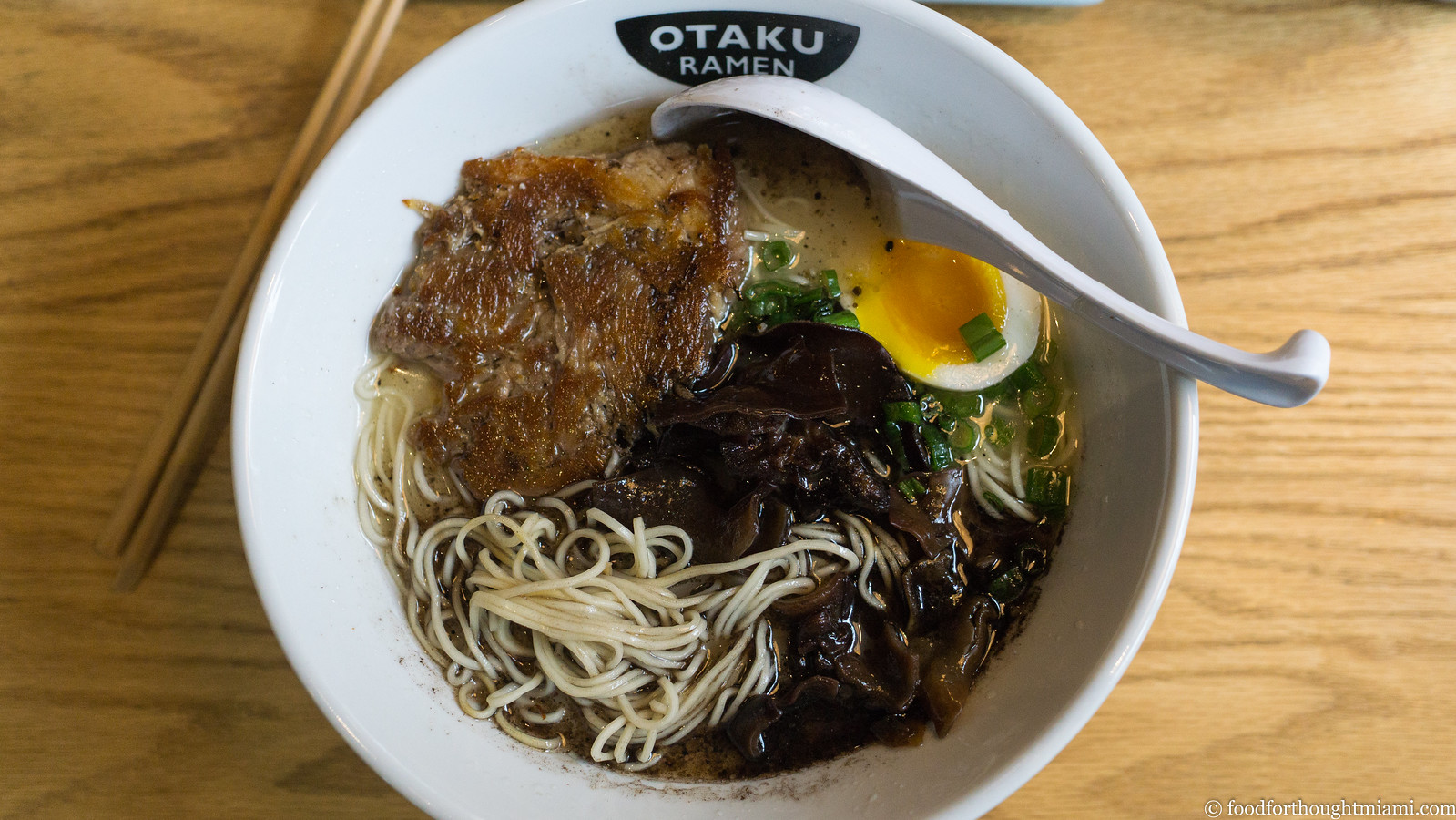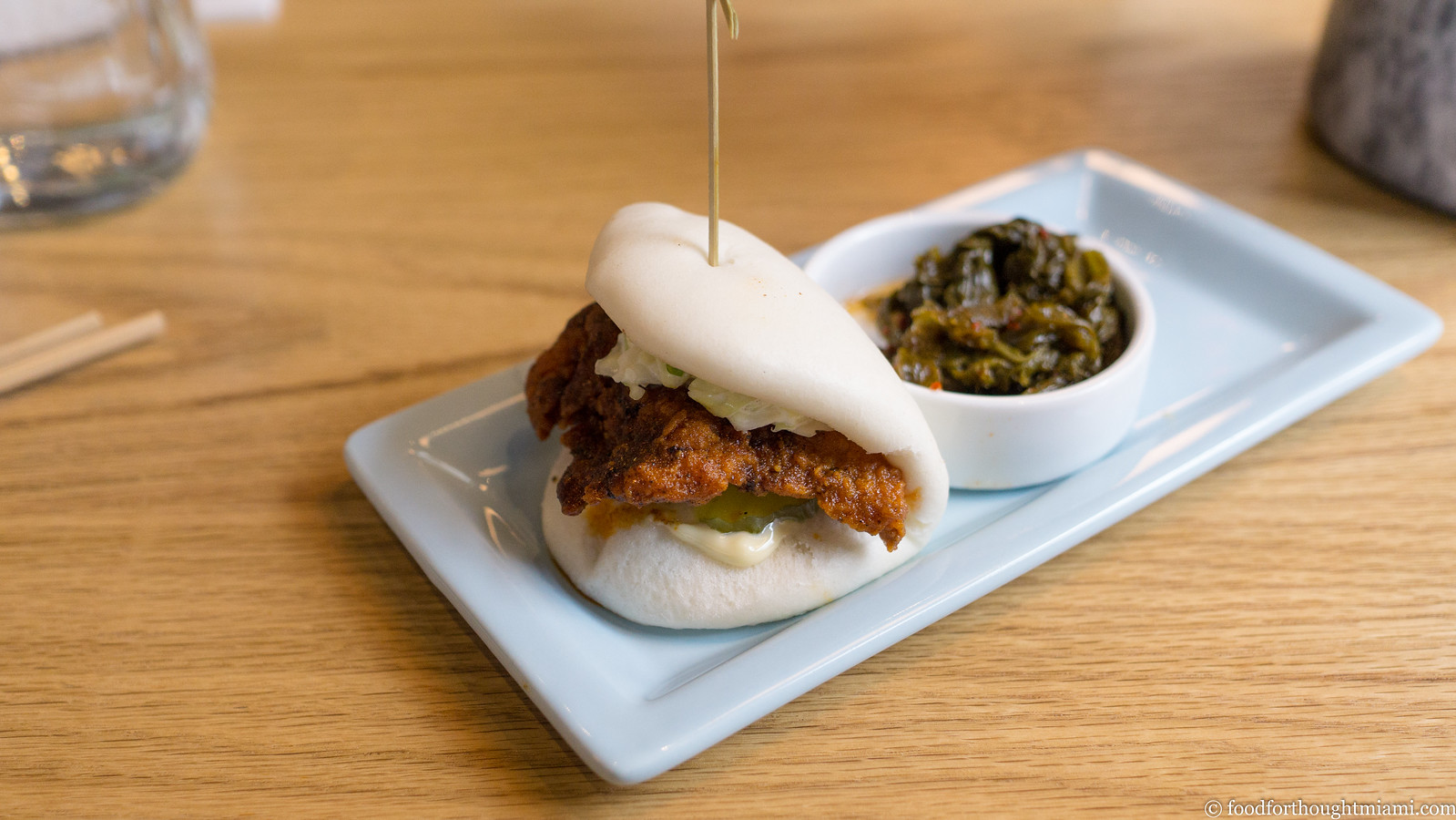Showing posts with label eat your vegetables. Show all posts
Showing posts with label eat your vegetables. Show all posts
Friday, August 23, 2019
Cobaya Isabela with Chef Jose Ramirez-Ruiz
Sometimes it takes an outsider to see the things you don't always see in yourself.
José Ramirez-Ruiz was a New Yorker through and through. He refined his cooking skills at some of the city's top restaurants – Per Se, Chef's Table at Brooklyn Fare, Isa – before going out on his own in 2012 with a pop-up in Williamsburg called "Chez José." Chez José eventually ripened into a full-blown restaurant called Semilla in late 2014. Despite its diminutive size – there was only seating for 18 around a U-shaped counter, and the staff consisted of a grand total of two cooks and two servers – Semilla earned accolades disproportionate to its stature. Pete Wells praised its vegetable-forward tasting menus in a two-star New York Times review in early 2015,[1] Eater's Ryan Sutton issued a glowing four-star review a couple months later, naming Semilla "New York's Next Great Restaurant,"[2] Eater's Bill Addison included it in his "21 Best New Restaurants in America," Bon Appetit included it in its top 10 "Best New Restaurants of 2015," and by that fall, Michelin awarded the restaurant a star.
But Semilla was not built to last – Ramirez-Ruiz's partner Pamela Yung, who handled Semilla's highly regarded breads and desserts, left late the following year, and by March of 2017 the restaurant was closed. In the aftermath, Ramirez-Ruiz found his way down to Miami on a corporate consulting gig. Fortunately for us, he's decided to stick around for a while, and recently has devoted himself full-time to opening a new restaurant – Isabela – in Little Haiti. Earlier this month, we got him to do a dinner with our Cobaya group that provided a preview of what's to come.
(You can see all my pictures from the dinner in this Cobaya Isabela with Chef Jose Ramirez-Ruiz flickr set).
Unlike many out-of-town chefs who have rolled into Miami like emperors visiting the backwards colonies, Ramirez-Ruiz arrived with humility and curiosity:
The result is a unique and fresh take on Miami's subtropical "local flora and fauna," as Ramirez-Ruiz puts it. He uses ingredients we're all familiar with – mangoes and papaya and plantains and yuca – but in new and inspired ways we haven't necessary seen before.
While he works on getting Isabela off the ground, a nearby space at Little River Miami played host for our dinner. I've now been here for a few different things – Eat Here Now's Friday lunches, Scott Linquist's Chivo! goat barbacoa – and while it's pretty bare-bones at the moment, the space also has some great potential. Lots of foliage from plant and floral designer Madre Selva, which keeps a studio nearby, helped soften the rough edges.
Ramirez-Ruiz started things off with a round of snacks, all brought out to the tables at once: delicate little mussels swimming in paprika-laced oil with sautéed onions, in the style of the wonderful canned seafood conservas of Spain and Portugal; flat-out delicious green olives stuffed with shrimp paste and warmed in the wood oven; rounds of fresh cheese also roasted in the oven and doused in a lemon vinaigrette, a sort of saganaki minus the flaming tableside presentation; some Wigwam country ham from Edwards Smokehouse;[3] and freshly baked sourdough bread, served with an army-green moringa butter. I've been told that moringa doesn't have a lot of flavor on its own, so maybe there was something else in here, but it had an intriguing, vegetal thing going on that I kept on coming back to for more.
I'd been to Ramirez-Ruiz's pop-up dinners at All Day and Jaguar Sun, and each time he'd served some variation on this dish: a creamy plantain soup, with melting comté cheese and crispy plantain "crunchies." It eats like a crazy hybrid of a Caribbean sopa de platano and a French onion soup, and this was possibly my favorite iteration.
(continued ...)
Monday, July 9, 2018
Chez Panisse | Berkeley, California
Some places aren't just restaurants; they're institutions. Chez Panisse certainly falls in that category. Its founder, Alice Waters, is widely regarded as the patron saint of the "farm-to-table" movement: the restaurant, which she opened in 1971, made the sourcing of local ingredients a cornerstone long before that term was commonly used, much less beaten to death.[1] And generations of restaurants since have followed suit.
My last visit to Chez Panisse must have been about twenty years ago.[2] It doesn't seem to have changed much at all, even though the two-story Arts and Crafts style space got a major facelift about five years ago after a fire. (No doubt it helped that the architect who first designed the restaurant, Kip Mesirow, was responsible for the renovation as well.) Downstairs is the original "restaurant," which still serves a three- or four-course prix fixe menu in a sort of country French idiom that changes on a daily basis. Upstairs is the "café," opened in 1980, which offers an à la carte menu and a somewhat more casual feel. Maybe the biggest change is that both upstairs and downstairs now have open kitchens, whose wood cabinets and shelves blend so seamlessly into the rest of the space that it really does feel a bit like eating in someone's home.
(You can see all my pictures in this Chez Panisse flickr set.)
Remarkably for a restaurant that's been around for nearly half a century, Chez Panisse doesn't feel particularly dated. Indeed, aside from the farm-to-table thing, there are at least a couple other facets of contemporary dining culture where I think Chez Panisse was way ahead of the game, including those daily changing menus, and the combination of high-end food in a more informal setting. If I told you that a rustic-looking place, with a charcoal grill and wood burning oven, serving food straight from the farms, fields and docks had just opened in the East Bay, you'd probably think it was right on trend. It's a testament to the restaurant's outsize influence; and, I suppose some would say, to the stagnancy of what's come to be known as "California Cuisine."[3]
There's a reason for the genre's staying power, though: when it's done right, it's still very good, especially in Northern California, which produces some of the greatest raw ingredients on the planet. And Chez Panisse is still doing it right.
We opted for the café over the restaurant. Although it may lack the dinner party vibe downstairs, the food still captures that "of the moment" feel: while the format of the à la carte menu stays largely the same, the particular pieces change from day to day, and sometimes even from lunch service to dinner.
Some of the highlights from our visit:
A simple salad of crisp, perky gem lettuce, dotted with juicy, sweet sungold tomatoes, napped with an assertively salty, funky anchovy dressing.
A crudo of wild California king salmon with cucumbers and green coriander, accompanied by a wispy salad of greens, herbs and slivered radishes.
A pizzetta cooked in the wood oven, topped with pancetta, hot peppers, capers and fresh rosemary – great to order as an appetizer "for the table."
(continued ...)
My last visit to Chez Panisse must have been about twenty years ago.[2] It doesn't seem to have changed much at all, even though the two-story Arts and Crafts style space got a major facelift about five years ago after a fire. (No doubt it helped that the architect who first designed the restaurant, Kip Mesirow, was responsible for the renovation as well.) Downstairs is the original "restaurant," which still serves a three- or four-course prix fixe menu in a sort of country French idiom that changes on a daily basis. Upstairs is the "café," opened in 1980, which offers an à la carte menu and a somewhat more casual feel. Maybe the biggest change is that both upstairs and downstairs now have open kitchens, whose wood cabinets and shelves blend so seamlessly into the rest of the space that it really does feel a bit like eating in someone's home.
(You can see all my pictures in this Chez Panisse flickr set.)
Remarkably for a restaurant that's been around for nearly half a century, Chez Panisse doesn't feel particularly dated. Indeed, aside from the farm-to-table thing, there are at least a couple other facets of contemporary dining culture where I think Chez Panisse was way ahead of the game, including those daily changing menus, and the combination of high-end food in a more informal setting. If I told you that a rustic-looking place, with a charcoal grill and wood burning oven, serving food straight from the farms, fields and docks had just opened in the East Bay, you'd probably think it was right on trend. It's a testament to the restaurant's outsize influence; and, I suppose some would say, to the stagnancy of what's come to be known as "California Cuisine."[3]
There's a reason for the genre's staying power, though: when it's done right, it's still very good, especially in Northern California, which produces some of the greatest raw ingredients on the planet. And Chez Panisse is still doing it right.
We opted for the café over the restaurant. Although it may lack the dinner party vibe downstairs, the food still captures that "of the moment" feel: while the format of the à la carte menu stays largely the same, the particular pieces change from day to day, and sometimes even from lunch service to dinner.
Some of the highlights from our visit:
A simple salad of crisp, perky gem lettuce, dotted with juicy, sweet sungold tomatoes, napped with an assertively salty, funky anchovy dressing.
A crudo of wild California king salmon with cucumbers and green coriander, accompanied by a wispy salad of greens, herbs and slivered radishes.
A pizzetta cooked in the wood oven, topped with pancetta, hot peppers, capers and fresh rosemary – great to order as an appetizer "for the table."
(continued ...)
Thursday, April 13, 2017
A Very CSA Seder
Passover is something of a culinary challenge: the whole prohibition on leavened grains can be pretty limiting, especially when it comes to dessert, and there are certain things that are expected: the matzo ball soup, the gefilte fish, the brisket, the tzimmes. I wanted to be respectful of tradition without being completely straitjacketed by it – let’s be honest, some of those old-timey dishes are better than others (for further reading: Charlotte Druckman, “Can You Update a Passover Menu and Still Satisfy Traditionalists?,” which was a source of much of the inspiration for my menu, though not any of the actual dishes). Also, I had a stockpile of CSA vegetables gathering in the refrigerator bin, and at least one vegetarian joining us for dinner.
So here’s what I came up with, and where applicable, where my recipes came from, with a few I made up myself:
(You can see all my pictures in this Passover Home Cooking flickr set).
To Nosh:
Beet Pickled Eggs - you’ll find a multitude of recipes for these online and elsewhere - my starting point was this Michael Solomonov recipe. I happened to already have a bunch of beet pickling liquid from some fairly ancient brined beets I made using the Bar Tartine recipe,[1] so I used that as my base, diluting it with some water, reinforcing it with some white vinegar, and sweetening it with some sugar. I stuffed a dozen cooled, peeled hard-boiled eggs into a couple big jars and covered them with the beet liquid, then let them sit for two days in the fridge.
I was expecting our crowd to be skeptical of these – actually, I thought I'd be eating leftover pink egg salad sandwiches for the next week – but they were a big hit. The colors – sunny yellow yolk bordered by a ribbon of white fading into magenta exterior – are really striking, and the flavor has just enough pickle-y kick to let you know it’s there without being overwhelming. These are super easy, beautiful, and a crowd-pleaser.
Chopped Liver - when I was growing up, my grandmother – and then my mom – used to serve chopped chicken liver molded into the shape of a bird. Then everyone stopped eating chopped liver, which came to be regarded as deadly. I think it may be getting a bad rap. Yes, chicken livers, like many organ meats, are high in cholesterol, but they’re relatively low in fat and high in nutrients. Yes, you add some schmaltz, but you don’t need a ton. I followed this recipe from Russ & Daughters, subbing duck fat for chicken schmaltz because we were saving our schmaltz for the matzo balls. It says the yield is 8-10 servings, but you can probably comfortably serve this much to a group of twelve because there's going to be four people who don't eat liver. Besides, because it’s so rich and intense, you don’t need to eat all that much – just a couple shmears on some matzo, and you’ll be happy and fortified. I say “Bring Back Chopped Liver!”
Smoked Mackerel Dip - Unlike some people, I actually like gefilte fish, but sorry, I’m not going to make it from scratch. We happened to have some smoked mackerel fillets in a drawer of the fridge, so I figured - why not make a fish dip instead? I only stumbled across Felicity Cloake’s “How to Make the Perfect …” column in The Guardian by googling “smoked mackerel dip,” but appreciated the trial-and-error methodology of trying out multiple recipes and taking the best of each of them. It turned out quite nice, though I perked it up with supplemental additions of fresh horseradish, lemon and dill just before serving.[2]
Traditional:
Matzo Ball Soup - This was Mrs. F’s domain. I tried to pass along helpful tips via Serious Eats for getting your balls to be sinkers or floaters or somewhere in between, but she had no interest. I did well to just leave her alone. Her broth was golden and clear and deeply chicken-y; her matzo balls were just substantial enough to let you feel their presence, but light and fluffy rather than leaden.
Chicken Marbella - Here I thought I was some kind of genius for suggesting we do Chicken Marbella for Passover dinner. Turns out that the Silver Palate Cookbook staple also has a long and well-established history on the Seder table.
Brisket - My mom makes the best brisket. Just saying. One day I'll pass along her secrets.
Not So Traditional:
Summer Squash Kugel - I’d accumulated an assortment of zucchini and summer squashes from CSA the past couple weeks, which nobody else in my family will eat. So I figured, I may as well unload them on my guests. But how? I hatched my plan: a kugel.
Kugels are usually stodgy, dense side dishes of potato or noodles bound with egg. The traditional style is pretty heavy and, let's be honest here, pretty bland. But maybe they didn’t have to be that way. Via the almighty google, I found inspiration in this Spring Zucchini Kugel recipe. The result was exactly what I was looking for: lots of layers of vegetables, bound but not weighted down by the eggs – almost like a very veg-intensive frittata or strata. And the lemon zest and mint really brighten up the flavors. Here’s how I did it:
Recipe:
4 lbs zucchini, summer squash or both
2 tbsp olive oil
4 eggs
½ cup matzo meal
1 tbsp lemon zest
2 tbsp mint, chiffonade
Salt and pepper to taste
Preheat oven to 400°.
Thinly slice the squash crosswise (a mandolin might be too thin, you want them to have just a little substance), toss in a large bowl with 1 tbsp olive oil and salt, and then lay out in a single layer on a sheet pan and roast at 400° for about 5-10 minutes. I didn't want to brown them so much as just to soften them and get some of the liquid out. You might need to use multiple sheet pans or do them in batches; a Silpat comes in handy. Remove to a colander and let them drain any additional moisture.
Reduce oven to 350°.
Crack the eggs into a large mixing bowl and stir until the white and yolk are blended. Add the cooked squash, sprinkle in ½ cup matzo meal, lemon zest, mint, and a good pinch of salt, and gently stir to blend (hands probably work best).
Coat the bottom and sides of a baking dish with the remaining olive oil, then gently dump the contents of the mixing bowl into the baking dish. Try to arrange the squash slices so they are laying flat rather than pointing up (most seem to settle into the right position on their own, and in any event, precision is not essential).
Bake at 350° for about 45-60 minutes, until browned on top and cooked through. Can be made in advance and reheated.
Kohlrabi Anna - Kohlrabi is arguably an even bigger CSA challenge than a load of zucchini. I actually love the odd vegetable, which looks kind of like an alien turnip, and tastes a lot like broccoli stems, but it can be a tough sell. I had an idea: Kohlrabi Anna. The classic Potatoes Anna involves thinly sliced potatoes layered with lots of butter and cooked in a pan until the outer surface is browned and crisp, and the potatoes are tender. I basically did the same thing, but with kohlrabi. I would have liked to have gotten a little more browning – I may have been too timid with the heat – but I really liked how this came out, the kohlrabi tender and nutty and sweet and suffused with butter. This also can be made ahead and reheated though it may lose whatever crunch it may have had.
Recipe:
4 kohlrabi
3 tbsp unsalted butter
2 tbsp fresh thyme
Salt
Preheat oven to 375°.
Peel and thinly slice the kohlrabi into rounds.
Melt 1 tbsp of butter and toss the kohlrabi with the butter, salt and 1 tbsp of thyme.
Rub bottom and sides of a 10" cast iron skillet with 1 tbsp butter.
Arrange kohlrabi slices in circles around the bottom of the skillet, shingling them and overlapping the edges. Dot each layer with butter, sprinkle with salt, and continue layering kohlrabi slices until they're all used up.
Put the skillet on a medium-high heat burner on the stove for 10-20 minutes to brown the bottom. Then move skillet to the oven and cook for another 30-40 minutes, until kohlrabi are tender.
Remove from oven, and when feeling sufficiently bold, put a plate or cutting board over the top of the skillet, then flip the plate/cutting board and skillet – the kohlrabi should come out in one piece, like a cake.[3] Garnish with more fresh thyme, cut into wedges, and serve.
Roasted Carrots with Za’atar and Green Harissa Aioli - Charlotte Druckman is right: tsimis is totally broken. Tsimis, or tzimmes, or tsimmes, no matter how you spell it, is usually pretty gross – an insipid, cloyingly sweet stew of carrots and dried fruit, often supplemented with other sugary vegetables like yams. There's no contrast in flavor (just sort of generically sweet) or texture (just sort of generically soft). I don't think anyone actually likes tzimmes.[4] I was not going to make a tzimmes.
Instead, I took a few different varieties of CSA carrots, halved the fat ones, tossed with some olive oil and salt, and roasted them (400° for about 20-30 minutes, until the biggest ones were just barely fork tender), then sprinkled them with za'atar spice, and served them with a green harissa aioli.
My inspiration came from the fact that dessert involved a meringue, and I had a whole bunch of egg yolks left over.[5] I saved one of them for a favorite kitchen trick: immersion blender aioli. The recipe I've linked to is on Serious Eats, but the first time I saw this done, it was by José Andrés. Kenji uses the stick blender for half the oil (the canola portion), and then blends the olive oil in by hand. This seems unnecessary to me – I dumped it in all at once, and it came out just lovely. For some real excitement, make it right in a jam jar that's barely large enough for all the ingredients. If you start with the immersion blender at the bottom of the jar, and slowly, gently move your way up, it perfectly emulsifies all the oil without any splatters, and no need to decant into another container.
Once the aioli is made, just stir in prepared green harissa – or any other flavoring you like – to taste. I used a couple tablespoons of this Mina Green Harissa, which I like quite a bit. I also cut back to just three garlic cloves in the aioli recipe, as I didn't want the garlic to be dominant. Not to set the bar too low, but this was better than tzimmes.
Bitter Greens with Horseradish Ranch - the traditional Seder plate includes bitter herbs – maror and chazeret – for which we now customarily use horseradish and romaine lettuce, respectively. I started thinking about how I could incorporate these flavors into a dish, and while staring at the latest bag of lettuces from my CSA, decided on a bitter greens salad with horseradish ranch dressing. Crunchy, peppery fresh radishes also seemed thematically appropriate. This is my go-to formula for a creamy salad dressing, which welcomes all manner of variations – different herbs, finely chopped chile peppers, a dash of hot sauce, some mashed avocado. No doubt it's a common formula, but I think I arrived at it by way of Andrew Carmellini's buttermilk dressing recipe in "American Flavor."
Recipe:
2 tbsp white wine vinegar
2 tbsp grated fresh horseradish
2 garlic cloves, minced
½ cup buttermilk
½ cup plain Greek yogurt
½ cup mayonnaise
2 tbsp Fresh dill, chopped
Juice of 1 lemon
Salt, to taste
1 big bag mixed salad greens, washed and dried
1 watermelon radish, thinly sliced
3 breakfast radishes, thinly sliced
3 hakurei turnips, thinly sliced
Add vinegar to mixing bowl. Add horseradish and garlic and steep for 5-30 minutes. Add buttermilk, yogurt, mayo, dill and stir until combined. Add lemon juice and salt to taste. Add radishes and turnips to salad greens,[6] and toss with dressing.
Dessert:
Walnut Chocolate Dacquoise - I am not a baker. Dessert is generally the least exciting part of a meal for me, and I'm even less enthusiastic about making them. But I've been watching lots of Great British Baking Show on Netflix lately, and it's boosted my confidence a bit. And besides, Passover desserts are already pretty terrible (no leavened flour), so how badly could I do?
For whatever reason, meringue is a little easier for me to wrap my head around than most desserts, so I settled on this variation on a dacquoise. We had a big bag of walnuts in the house, and Mrs. F likes walnuts, so I substituted them for the hazelnuts. It was actually pretty easy: toast and chop the nuts, whip the egg whites to soft peaks, add sugar and whip to stiff peaks, mix in vanilla and almond extracts, then fold in the chopped nuts, chocolate chips, and melted chocolate. Then you spread the mixture out into three circles on parchment paper[7] – as far as I'm concerned, they don't need to look perfect – and bake at 225° for 2 1/2 hours, then let them cool and dry out in the oven.
When you're ready for assembly, whip three cups of heavy cream with 1/4 cup confectioner's sugar until you have whipped cream; then spread a layer of whipped cream over one of the meringues, top with a second meringue, repeat, top with the third meringue, and repeat once more. I then stuck it in the freezer overnight, sliced it straight out of the freezer (some bits will break off; save the crumbs), then moved it to the fridge the morning of Seder dinner. Before serving, I sprinkled the top with chocolate shavings, crumbled toasted walnuts, and the pulverized crumbles of meringue that had broken off during slicing.
Folks: it was ridiculously good. The meringue was maybe a bit dense, but it had a good crunch and crumble, the flavor of the walnut and chocolate carried through, the whipped cream was an airy, fluffy contrast, and even if it kind of looks like it's falling apart around the edges, it sliced very nicely to show the alternating layers of meringue and cream. I may be stuck with Passover dessert duty now.
Chocolate Toffee Matzo - this was a recipe I pulled from Bon Appetit, and accomplishes the unique feat of making matzo actually taste good (though of course it's not the matzo, its' everything you put on top of it). The idea is you make a toffee from butter and sugar (with a pinch of Aleppo pepper), spread that on the matzo, bake it for about 10 minutes, then melt chocolate over the top in the residual heat, spread the chocolate, and sprinkle with pistachios, coconut flakes, cocoa nibs, flaky salt, and more Aleppo pepper. Great flavors here; the toffee component left something to be desired – whether because the instructions are flawed (I don't think a "simmer" gets the toffee thick enough) or my own failed execution, the toffee wasn't spreadable, and wound up more like a soak in a hot, sweet melted butter bath for the matzo. Sticking it in the freezer after it was fully assembled and cooled helped it firm up.
So we got to share the holiday with family and friends, we got to tell the story of Passover one more time, we drank wine and reclined, we used up a whole bunch of our CSA produce, and we discovered I can actually make a dessert. That was the fun part. Now comes the hard part – not eating bread for a week. Chag Sameach to all my fellow tribespeople, and as for the rest of you: please stop posting pictures of delectable baked goods for the next week.
[1] Oh my gosh - could these have been the same pickled beets I wrote about making two years ago? Maybe.
[2] While this menu is "kosher for Passover," it is not actually "kosher" – we’ve got both meat and milk all over the place at the same time. Hey, we each observe in our own ways.
[3] When you pull it from the oven, give the skillet a little shake to make sure the kohlrabi isn't sticking (if it is, I'm not sure how to help you). If you flip it onto a cutting board (I find this easier than a dish because the cutting board is flat), you can then slide it from the cutting board onto a serving dish.
[4] This is a big part of why Chicken Marbella makes so much sense as part of a Seder: you can offload all that sweet stuff into a meat dish where you at least get some contrast from the olives and capers and herbs.
[5] Pro tip: with the rest of the yolks, make a lemon or other citrus curd (I had blood oranges, and used this recipe as a starting point, but used five yolks instead of the three yolks and three whole eggs called for in the recipe, and cut the sugar back to 1/4 cup); then dollop spoonfuls of the curd on macaroons.
[6] The radishes can be sliced the day before and kept in ice water, they'll remain nice and crisp and this makes last-minute assembly easier.
[7] I actually made a piping bag from a Ziploc with a corner cut off, but my piping was, well, pretty inartful (let's just say I was reminded of walking the dogs) and so I then spread it out into circles using an offset spatula.
[2] While this menu is "kosher for Passover," it is not actually "kosher" – we’ve got both meat and milk all over the place at the same time. Hey, we each observe in our own ways.
[3] When you pull it from the oven, give the skillet a little shake to make sure the kohlrabi isn't sticking (if it is, I'm not sure how to help you). If you flip it onto a cutting board (I find this easier than a dish because the cutting board is flat), you can then slide it from the cutting board onto a serving dish.
[4] This is a big part of why Chicken Marbella makes so much sense as part of a Seder: you can offload all that sweet stuff into a meat dish where you at least get some contrast from the olives and capers and herbs.
[5] Pro tip: with the rest of the yolks, make a lemon or other citrus curd (I had blood oranges, and used this recipe as a starting point, but used five yolks instead of the three yolks and three whole eggs called for in the recipe, and cut the sugar back to 1/4 cup); then dollop spoonfuls of the curd on macaroons.
[6] The radishes can be sliced the day before and kept in ice water, they'll remain nice and crisp and this makes last-minute assembly easier.
[7] I actually made a piping bag from a Ziploc with a corner cut off, but my piping was, well, pretty inartful (let's just say I was reminded of walking the dogs) and so I then spread it out into circles using an offset spatula.
Thursday, March 2, 2017
Cobaya Rancho Patel with Chef Niven Patel
I knew when we agreed to do a Cobaya dinner way down in Homestead that, one way or another, it would be memorable. Actually, we had a pretty high degree of confidence that it would be memorable for the right reasons. Our chef for the evening, Niven Patel, is a Michael's Genuine alum, and is in the process of opening his own place – Ghee[1] – which will combine the flavors of his Indian heritage with the farm-to-table ethos of MGFD. About a year ago, I got a preview of what Patel had in mind when he did a pop-up dinner at Genuine sibling Harry's Pizzeria. It was excellent. So when he said he wanted to host a dinner at his home and backyard farm, we found a way to make it happen. Our confidence was not misplaced.
(You can see all my pictures in this Cobaya Rancho Patel flickr set).
Our early 6pm start time meant there was still some late afternoon sun shining on the backyard garden, which Patel has planted with items that will eventually be used to supply the restaurant: papaya, taro leaf, chile peppers, herbs, greens, turmeric, root vegetables. A welcome cocktail courtesy of Edukos[2] featuring "Ghee Wiz sake," basil infused mango juice, and spice-infused syrup, helped everyone slip into the right mindset.
As folks made their way in, Niven's crew started circulating with an assortment of snacks. There were freshly fried pakoras of sweet onion and taro leaf from the backyard garden. A paste of sweet Florida shrimp, sesame seeds and scallion topped a particularly tasty rendition of shrimp toast. And a special treat: khandvi, or as our menu called them, "chickpea roll-ups." This was something I'd never tried before, and for good reason: Niven says you're unlikely to ever see these unless your mother or grandmother is making them, as getting the batter – a mixture of chickpea flour and yogurt or buttermilk – and texture right is a bit of alchemy that could keep molecular gastronomists busy for a while. I was glad someone knew how to do it: these light, fluffy crepes, reminiscent of Japanese tamagoyaki, and seasoned with toasted black mustard seeds, julienned cilantro and curry leaf, were absolutely delicious.
(continued ...)
Monday, October 3, 2016
best thing i ate last week: pan con tumaca at Alter
A recent twitter exchange hit on a nugget of truth: more often than not, when a dish is "revisited" or "reinvented" (or worse, "deconstructed"), the end result pales in comparison to the original.
The classic Spanish snack, pan con tumaca (a/k/a pan con tomate or pa amb tomàquet), is a simple thing: grilled or toasted bread, rubbed with raw garlic and tomato, drizzled with olive oil, and sprinkled with salt. And yet with the right ingredients – crusty bread, ripe juicy tomato, fruity peppery olive oil – it is magically good, and difficult to improve upon.
The version I had this weekend at Alter, though, manages it. A thin plank of sourdough, golden on its surface but with still a whisper of tenderness at its center. A daub of tomato butter, warmed with Aleppo pepper. Soft, crushed cherry tomatoes, bleeding their juices. Slivers of pickled garlic, as thin as Paulie cut in prison. Red vein sorrel – pretty, sure, but also providing a bit of grassy, tart contrast.
Unfortunately, Saturday was the last lunch service at Alter, which is too bad: the 5-course lunch tasting for $39 was one of the best meals you will ever find at that price. (You can see pictures of the whole meal in this Alter - Lunch flickr set; the pan con tumaca was an extra sent out by the kitchen). But the trade-off will be a reinvigorated focus on dinner service at Alter, including an upcoming addition of some grilling stations outside to do some live fire cooking. Good things coming.
Alter
223 NW 23rd Street, Miami, Florida
305.573.5996
Friday, June 24, 2016
Birch | Providence, Rhode Island
I lost count at fifty. So let's just say there are at least fifty sheets of kohlrabi, layered in soft, translucent ribbons, that made up this dish. They're marinated with cherry leaves, interspersed here and there with apple, Vietnamese coriander and lemon balm. The whole fragile assemblage is laid atop a base of tangy creme fraiche. It's beautiful, delicate, brightly flavored, unexpected – and also the best kohlrabi dish I've ever tasted.
Not that there's a robust competition for that honor. But I'm actually a big fan of the unloved and alien-looking vegetable. Apparently so is Ben Sukle, the chef at Birch in Providence, Rhode Island, which he opened with wife Heidi in 2013.
I keep lists of restaurants for dozens of cities I've never visited, as if I might get airlifted one day without warning and need to find a good meal. I didn't have a long list for Providence, but I did have at least this one name.[1] I'd heard of Birch by way of DocSconz, who'd gotten there early and then made his way back the following year.
So when I had reason to visit Providence this past Sunday,[2] I didn't look that hard for a same-day return flight, and instead lingered for dinner. It was time well spent.
As that kohlrabi dish suggests, Sukle's approach at Birch is vegetable-forward, with a strong focus on the local and seasonal, including a few real oddities here and there ("preserved hardy kiwiberry"?). Just from looking at his menu, you'd likely hazard a guess that Sukle's spent some time in the New Nordic church, and you'd be right: his resumé includes a one-month stage at Rene Redzepi's Noma, and it obviously made an impression. But there's a difference between inspiration and apery. This isn't all reindeer moss and gooseberries; Sukle's taken the spirit and ethos of the style and adapted it to his native New England ingredients in a way that feels natural and uncontrived.
That menu comprises four courses, with three choices for each. I unabashedly enjoy solo dining, but one downside is not getting to try as many things. Happily, there was a solution: though not listed, Birch will also do a chef's choice, 8-course tasting in smaller portions. Perfect.[3]
The dining room at Birch has a wonderfully simple layout: it's a square about 20 feet across, occupied by a u-shaped counter lined with comfortable stools on three sides. A couple servers present and remove plates and drinks from the middle. It's similar to places like Momofuku Ko or Blanca or Catbird Seat, or if you want to go a few years earlier, L'Atelier de Joel Robuchon, except that the kitchen remains hidden behind a closed door. To me, it's actually reminiscent of an old school horseshoe-shaped diner counter, and engenders a feeling of intimacy and camaraderie.
(You can see all my pictures in this Birch - Providence, Rhode Island flickr set).
The seasonal focus is on display from the start with a bite of asparagus, the stalk of which had been tempura fried and then wound with a paste of black garlic, truffle and nasturtium, the purple-shaded bud unadorned. The fried stalk was so delicate as to almost disappear in one bite; the raw tip retained a pleasing vegetal snap.
Following the kohlrabi, a dish of raw scallops paired with turnips in a broth infused with cherry blossoms, dusted with lemon zest, and topped with arugula flowers. The white-on-white composition looked like shards of alabaster in a shallow pool. The sweetness of the cold fresh scallop played against the firmer, earthy chew of the turnip, both bound by the salty, tangy, faintly floral broth.
(continued ...)
Thursday, June 23, 2016
best thing i ate last week: grilled cabbage at Birch (Providence)
This past Sunday I found myself in Providence, Rhode Island for 24 hours; a fortunate opportunity to pay a visit to chef Ben Sukle's restaurant, Birch. Here's an excerpt from a nearly-finished recap of an outstanding meal:
Instead of the usual slab of meat that invokes the end of the savory dishes on the tasting menu, Sukle went with a tranche of grilled cabbage. The edge was black with char, the interior was soft and silky without being cooked to sulfurous mush. Folded within was creamy rutabaga and caramelized sauerkraut. Speckled on top was an assortment of toasted seeds – sunflower, cumin, sesame. A broth of dried apples was poured tableside. This was a fantastic dish.
More to come soon.
Monday, April 18, 2016
best thing i ate last week: grilled eggplant salad at Vagabond Backyard Cookout
I'm a big fan of all the good things happening in Miami's "MiMo District" along Biscayne Boulevard, anchored of late by the refurbished Vagabond Motel. Yes, it's partly because it's a straight shot from home across 79th Street Causeway for me, but it's also because the neighborhood has some old 1950's Miami feel, which many of its new inhabitants are looking to preserve in some fashion while still bringing new styles and flavors.
So I was particularly happy to see Chef Alex Chang, who runs the Vagabond Restaurant, team up with Chef Phuket Thongsodchaveonde of Cake Thai Kitchen up the street for a Backyard Cookout around the Vagabond pool. Two of my favorite spots, at one event? Sold.
Together they did a Thai-style BBQ that included grilled corn slathered with coconut cream and palm sugar, a fragrantly spicy Isaan style pork shoulder larb dusted with roasted rice powder, BBQ chicken with papaya salad and sticky rice, grilled whole fish cooked in banana leaves, and for dessert, an ice cream sandwich tucked into a hot dog roll topped with toasted peanuts and fish sauce caramel (a LOT better than it might sound).
(You can see all my pictures on the back end of this Vagabond Restaurant flickr set).
But my favorite dish was this eggplant salad. Little golf ball sized Thai eggplants were halved and grilled so their edges blackened and their insides had just started to go soft and custardy. They were doused in a key lime vinaigrette packing sour, sweet, and just a little heat. But the clincher was the toppings: those crispy shallots, those chewy, funky dried shrimp, like little flavor bombs that keep you digging in for another bite.
It was the best thing I ate last week, and a really fun way to spend a Sunday afternoon.
Tuesday, March 8, 2016
first thoughts: Plant Food + Wine - Miami (Wynwood)
Skeptical. Doubtful. Dubious. Let's just say I wasn't really so sure that I'd enjoy a restaurant committed to an entirely vegan, raw menu. It's not that I'm opposed to vegetables – I love them. But as an unrepentant omnivore who cares about flavor first and foremost, I'm wary of any dogma that would keep huge categories of delicious edible things off my plate, and even more suspicious of the notion that none of the things on that plate should be cooked.
But that's the thinking behind Plant Food + Wine, Chef Matthew Kenney's new restaurant in Miami's Edgewater neighborhood.[1] Kenney is a chef and "lifestyle" guru who also runs The Gothic in Belfast, Maine as well as another Plant Food + Wine in Venice, California. He has published several books and hosts "Culinary Academies" to teach plant-based cooking techniques, all under the tagline of "crafting the future of food."
Pleasantly surprised. That's how I felt after my first meal at Plant. Despite an entirely vegan menu where no food is heated beyond 110° (and maybe even in some instances because of that commitment), the food at Plant was mostly quite delicious. Somewhat uncharacteristically for a restaurant that is in a sense defined by what it chooses not to serve, there's as much attention paid to flavor and presentation as there is to principle. And that's a welcome distinction.[2]
(You can see all my pictures in this Plant Food + Wine flickr set).
The place itself is a stunner. It's on a gigantic lot with a sprawling patio bisected by a blue-lit wading pool, surrounded by towering date palms. There's as much seating outside on the deck as there is inside the dining room, which feels open and breezy thanks to its double-height ceiling, bright white open kitchen,[3] and retracting glass doors that open the indoor and outdoor spaces up to each other.
The menu features several smaller items "for the table," followed by about eight "small plates" and around the same number of "mains," with most smaller plates priced in the low teens and larger plates hovering around the $20 mark. We ordered a couple of items from each section of the menu.
I've often puzzled over why so much plant-based food feels like penance. Vegetables can be so bright and colorful, yet so much vegan food – all the "field roasts" and "chik'n" and their ilk – looks like processed pet food. That's not the case at Plant, where vegetables are rightly celebrated.
Kimchi dumplings feature bright green translucent wrappers wrapped around a nutty filling, with even brighter beet-dyed magenta swooshes adorning the plate. I’ve gradually come around to Gael Greene’s conclusion that most foams are “insipid,” but here's one that actually tastes pointedly of ginger and contributes a nice accent to the dish. Banh mi lettuce wraps, another item "for the table," actually use deep-green collards for their casing, which are filled with a smoked chili-almond pate, crunchy napa cabbage, and slivers of pickled daikon radish and red peppers.
A sunflower caesar salad uses both crunchy romaine and peppery arugula, dressed in a thick sunflower seed dressing with a rich, tahini-like flavor.[4] Sunflower seeds play the role of croutons; briny capers even more effectively play the role of the traditional anchovies. It happens to be a great salad, mixing both bright and deep flavors and a bunch of nice textures.
A small plate of romanesco cauliflower, lightly cooked to soften its raw edge, is tossed with a tangy salsa verde, served over a rich toasted pepita cream, and laced with ribbons of preserved lime. More good flavors: but I wished it had been given another pinch of salt and that the preserved lime had more prominence.
The MK Bowl pictured at the top is listed in the “mains” – and I have to confess that while I have no opposition to salads generally, I often struggle to think of them as a main course to a meal. But this achieved a certain substantiality, combining delicate lettuces with heartier shaved root vegetables, creamy avocado, fresh sprouts, grassy carrot greens, and crunchy hemp seeds, all lightly bound with a tangy, savory lemongrass tahini dressing. I might have wished for the sunflower-chia seed “croutons” to have more crunch, instead of the texture of wet paper, but everything else here worked.
(continued ...)
Monday, February 22, 2016
first thoughts: Ichimi Ramen, Coral Gables
There are so many new restaurants opening in Miami these days that I have given up on the prospect of keeping current with all of them. In fact, I've somewhat happily resigned myself to the opposite: I'll just wait six months, and a good number of them will have already closed.
Still, amidst this latest wave, there are some good things happening. I was sad to see Little Bread (formerly Bread & Butter) close in Coral Gables as Chef Alberto Cabrera heads off to Las Vegas, but was happy to see a promising-looking replacement coming into the space; Ichimi Ramen. Ichimi is a ramen-ya and izakaya run by Chef Constantine DeLucia, who previously worked at Momi Ramen as well as Lure Fishbar and Estiatorio Milos. I've already been in there twice since it opened a couple weeks ago.
Like Momi, Miami's only dedicated ramen specialist, the noodles are made in-house. The prices are also close but not quite at Momi-esque levels (depending on contents, ramen bowls run $18-22),[1] though at least they take credit cards so you don't need to bring a wad of cash. The menu currently features four styles of ramen (tonkotsu, seafood, veggie, and beef brisket) as well a few cold ramen dishes. They are planning to do tsukemen (plain noodles served with an intense dipping sauce on the side rather than in broth), but it wasn't yet being served on either of my visits.
(You can see all my pictures in this Ichimi Ramen flickr set).
The first bowl I sampled was their veggie ramen, and it was great: a focused, flavorful shoyu broth (that I assume starts with a kombu dashi) stocked with shiitake and nameko mushrooms, bamboo shoots, bean sprouts, and a bouquet of pea shoots and tiny greens. The noodles are simultaneously hardy and supple, with a nice spring to them. It brought back memories of one of the first and still best bowls I had at Momi, a vegetarian ramen I've never seen on the menu there since. I've also tried Ichimi's tonkotsu ramen, which was good but not a show-stopper: the slabs of pork belly were delicious, but the broth lacked that lip-sticking unctuousness that typically characterizes the long-cooked pork bone elixir.
Ichimi also offers a pretty extensive menu of "izakaya" type small plates, most of which are much more ambitious and chef-y than your average izakaya. Maybe the best example is this "uni taco," which cleverly uses a tempura-fried nasturtium leaf as the tortilla, then tops it with a slice of wagyu beef, a couple lobes of tender, bright-orange sea urchin, and a spray of shiso "air, with a final garnish of purple micro-shiso and more pea tendrils.
(continued ...)
Still, amidst this latest wave, there are some good things happening. I was sad to see Little Bread (formerly Bread & Butter) close in Coral Gables as Chef Alberto Cabrera heads off to Las Vegas, but was happy to see a promising-looking replacement coming into the space; Ichimi Ramen. Ichimi is a ramen-ya and izakaya run by Chef Constantine DeLucia, who previously worked at Momi Ramen as well as Lure Fishbar and Estiatorio Milos. I've already been in there twice since it opened a couple weeks ago.
Like Momi, Miami's only dedicated ramen specialist, the noodles are made in-house. The prices are also close but not quite at Momi-esque levels (depending on contents, ramen bowls run $18-22),[1] though at least they take credit cards so you don't need to bring a wad of cash. The menu currently features four styles of ramen (tonkotsu, seafood, veggie, and beef brisket) as well a few cold ramen dishes. They are planning to do tsukemen (plain noodles served with an intense dipping sauce on the side rather than in broth), but it wasn't yet being served on either of my visits.
(You can see all my pictures in this Ichimi Ramen flickr set).
The first bowl I sampled was their veggie ramen, and it was great: a focused, flavorful shoyu broth (that I assume starts with a kombu dashi) stocked with shiitake and nameko mushrooms, bamboo shoots, bean sprouts, and a bouquet of pea shoots and tiny greens. The noodles are simultaneously hardy and supple, with a nice spring to them. It brought back memories of one of the first and still best bowls I had at Momi, a vegetarian ramen I've never seen on the menu there since. I've also tried Ichimi's tonkotsu ramen, which was good but not a show-stopper: the slabs of pork belly were delicious, but the broth lacked that lip-sticking unctuousness that typically characterizes the long-cooked pork bone elixir.
Ichimi also offers a pretty extensive menu of "izakaya" type small plates, most of which are much more ambitious and chef-y than your average izakaya. Maybe the best example is this "uni taco," which cleverly uses a tempura-fried nasturtium leaf as the tortilla, then tops it with a slice of wagyu beef, a couple lobes of tender, bright-orange sea urchin, and a spray of shiso "air, with a final garnish of purple micro-shiso and more pea tendrils.
(continued ...)
Saturday, February 6, 2016
travelogue: three days of eating (and other things) in Nashville,Tennessee
My first report from our Southern road trip started with three days in and around Memphis, Tennessee. From there we hit the road to visit another city I'd never seen: Nashville. The contrast is striking: while Memphis feels a bit stuck in time, Nashville is booming. The city is experiencing rapid job and population growth, is filled with shiny new public works projects like the massive Music City Center, and the skyline is dotted with as many construction cranes as Miami in the throes of a building craze.
I was amazed to hear from one of our Uber drivers that the East Nashville neighborhood of our (pretty fabulous) AirBnB was, just five years ago, one of the roughest parts of town. You would never know. Now, it's filled with charmingly restored bungalows, third-wave coffee houses, boutique clothiers, a butcher shop, and several restaurants.[1]
After three somewhat BBQ-intensive days in Memphis, we were ready for something different. Happily, a place within walking distance of our home base offered just that: Little Octopus.
The restaurant is the product of husband-and-wife team Sarah and Brad Gavigan, who had previously used the space to run a pop-up called – appropriately enough – POP Nashville. POP was the testing ground for a ramen shop that's now made a permanent move to another location called Otaku Ramen (which we also visited, more below), and also hosted guest dinners with folks like Dominique Crenn (Atelier Crenn), Andy Ricker (Pok Pok) and Ryan Prewitt (Peche). Now it houses Little Octopus, which, coincidentally, is run by a chef with some Miami roots, Daniel Herget.[2]
Little Octopus serves up a long menu of mostly small plates, the overwhelming majority of which are vegetable- and seafood-centric. They are also entirely agnostic as to culinary genre: a Mexican style ceviche spiked with Worcestershire sauce shares space with Mediterranean sardines and a congee that starts in China but ends up who-knows-where, with smoked pumpkin, durian and shiitake mushrooms (it was one of the strangest things I've eaten in a while, but good).
Some highlights: fatty hamachi, block-cut like sashimi, served with a chunky romesco sauce, burnt bread powder and cerignola olives; juicy, crisp-skinned pan-roasted chicken, served over a vibrant salsa verde with a perky herb salad; those sardines, fat and fresh, simply grilled, dusted with bottarga, and drizzled with lemon and olive oil.
While I often seek out local flavor when traveling, not every restaurant needs to bleed the terroir of its immediate surroundings. This was good, fun food, and a welcome change of pace.
(You can see all my pictures in this Little Octopus flickr set).
Little Octopus
604 Gallatin Avenue, Nashville, Tennessee
615.454.3946
The next day we checked out the usual tourist things downtown, including a peek at Ryman Auditorium and taking in a little honky-tonk at Robert's Western World. The highlight for me was Hatch Show Print, a letterpress print shop dating back to 1879, still operating and now situated inside the Country Music Hall of Fame. Lunchtime found us in the Gulch, which everyone talks up as a booming new Nashville neighborhood,[3] and also happens to be where Otaku Ramen recently established a permanent home.
The menu at Otaku is short and sweet: basically, four types of ramen, supplemented by a couple different steamed buns as "snacks" and a few rice bowls. The ramen was quite good. I'd be torn in picking a favorite between the "Tennessee tonkotsu," which featured a hearty, creamy pork bone broth along with confit pork, woodear mushrooms, black garlic oil and a runny egg; the restorative paitan ramen featuring a rich, cloudy chicken stock with chashu and greens; or the more traditional shoyu ramen with a limpid golden-brown chicken and dashi broth base.
For an extra $6, a lunch "set" will get you a bun and an "add-on" to your ramen bowl (i.e., an extra egg, a spice "bomb," or some karashi takana), which is money well spent. The hot chicken bun was pretty much a perfect little snack, the puffy clamshell bun holding a slab of juicy, spicy chicken along with some Kewpie slaw and a couple sweet dill pickles.
(You can see all my pictures in this Otaku Ramen flickr set).
This was an ideal lunch for a cold, blustery Nashville day.
Otaku Ramen
1104 Division Street, Nashville, Tennessee
615.942.8281
(continued ...)
I was amazed to hear from one of our Uber drivers that the East Nashville neighborhood of our (pretty fabulous) AirBnB was, just five years ago, one of the roughest parts of town. You would never know. Now, it's filled with charmingly restored bungalows, third-wave coffee houses, boutique clothiers, a butcher shop, and several restaurants.[1]
After three somewhat BBQ-intensive days in Memphis, we were ready for something different. Happily, a place within walking distance of our home base offered just that: Little Octopus.
The restaurant is the product of husband-and-wife team Sarah and Brad Gavigan, who had previously used the space to run a pop-up called – appropriately enough – POP Nashville. POP was the testing ground for a ramen shop that's now made a permanent move to another location called Otaku Ramen (which we also visited, more below), and also hosted guest dinners with folks like Dominique Crenn (Atelier Crenn), Andy Ricker (Pok Pok) and Ryan Prewitt (Peche). Now it houses Little Octopus, which, coincidentally, is run by a chef with some Miami roots, Daniel Herget.[2]
Little Octopus serves up a long menu of mostly small plates, the overwhelming majority of which are vegetable- and seafood-centric. They are also entirely agnostic as to culinary genre: a Mexican style ceviche spiked with Worcestershire sauce shares space with Mediterranean sardines and a congee that starts in China but ends up who-knows-where, with smoked pumpkin, durian and shiitake mushrooms (it was one of the strangest things I've eaten in a while, but good).
Some highlights: fatty hamachi, block-cut like sashimi, served with a chunky romesco sauce, burnt bread powder and cerignola olives; juicy, crisp-skinned pan-roasted chicken, served over a vibrant salsa verde with a perky herb salad; those sardines, fat and fresh, simply grilled, dusted with bottarga, and drizzled with lemon and olive oil.
While I often seek out local flavor when traveling, not every restaurant needs to bleed the terroir of its immediate surroundings. This was good, fun food, and a welcome change of pace.
(You can see all my pictures in this Little Octopus flickr set).
Little Octopus
604 Gallatin Avenue, Nashville, Tennessee
615.454.3946
The next day we checked out the usual tourist things downtown, including a peek at Ryman Auditorium and taking in a little honky-tonk at Robert's Western World. The highlight for me was Hatch Show Print, a letterpress print shop dating back to 1879, still operating and now situated inside the Country Music Hall of Fame. Lunchtime found us in the Gulch, which everyone talks up as a booming new Nashville neighborhood,[3] and also happens to be where Otaku Ramen recently established a permanent home.
The menu at Otaku is short and sweet: basically, four types of ramen, supplemented by a couple different steamed buns as "snacks" and a few rice bowls. The ramen was quite good. I'd be torn in picking a favorite between the "Tennessee tonkotsu," which featured a hearty, creamy pork bone broth along with confit pork, woodear mushrooms, black garlic oil and a runny egg; the restorative paitan ramen featuring a rich, cloudy chicken stock with chashu and greens; or the more traditional shoyu ramen with a limpid golden-brown chicken and dashi broth base.
For an extra $6, a lunch "set" will get you a bun and an "add-on" to your ramen bowl (i.e., an extra egg, a spice "bomb," or some karashi takana), which is money well spent. The hot chicken bun was pretty much a perfect little snack, the puffy clamshell bun holding a slab of juicy, spicy chicken along with some Kewpie slaw and a couple sweet dill pickles.
(You can see all my pictures in this Otaku Ramen flickr set).
This was an ideal lunch for a cold, blustery Nashville day.
Otaku Ramen
1104 Division Street, Nashville, Tennessee
615.942.8281
(continued ...)
Subscribe to:
Posts (Atom)










